#200 films of 1952 film 20
Explore tagged Tumblr posts
Text

Day 22- Film: With a Song in My Heart
Release date: April 4th
Studio: 20th Century Fox
Genre: Musical
Director: Walter Lang
Producer: Lamar Trotti, Darryl F. Zanuck
Actors: Susan Hayward, Rory Calhoun, David Wayne, Thelma Ritter, Robert Wagner, Una Merkel
Plot Summary: This is the real life story of popular singer Jane Froman. She came to prominence in radio and on the stage in the 1930s with her distinctive contralto. While on a USO trip in 1943, her plane crashed, leaving her severely injured. Enduring dozens of surgeries trying to save both of her badly broken legs, she fights to sing and perform again.
My Rating (out of five stars): ****
I feared this movie would be too much of a weepie melodrama, and I wouldn't like it. Well, I spent the last 30 minutes of the film crying my eyes out. Literally! Every time my eyes were drying and I got control of myself, something would get the tears flowing again. It was a melodrama that made me weep, but it wasn’t the overly saccharine and sentimental melodrama I feared.
The good:
Jane Froman herself provided all the vocals for the film. This did mean that Susan Hayword was lip-synching, but it was a lot smoother than I expected.
Susan Hayward. Her performance was part of the reason the film strayed away from corny and cloying.
The “real life story” aspect of this made her plane crash and recovery extremely moving. It was chilling to keep reminding yourself that this really happened.
Thelma Ritter. A super-legend of character actors. If she’s in a film, I always light up and look forward to it.
Dealing with Froman’s complicated love life. I’m sure the version on film is much more sanitized than what actually happened, but I give credit to it for showing her tortured choice between her husband and another man.
The “another man” in the movie! Rory Calhoun, as John Burn, is so beautiful I could barely believe he was real. He’s just insanely handsome and turns your knees to jelly. He wasn’t a bad actor, either.
The realism with makeup. When Jane was shown after the crash and in varying hospital beds, she was often not wearing obvious makeup. This was uncommon in most films of the time. (See Linda Darnell in Island of Desire for example.)
Jane’s interactions with the U.S. troops she was singing for. This is where I bawled and bawled. The scenes were impressively affecting.
The bad:
A lot of the musical numbers were not very interestingly staged. They were all of Jane either singing on the radio or in concert halls, so I think the creative team was a little hog-tied by that. Thankfully in the scenes with her and the soldiers, this totally changed. The frequent interaction with the men as she was singing opened things up and made it much more interesting.
0 notes
Text

NOIR CITY: D.C. begins October 11 at the AFI Silver Theatre and Cultural Center running for 14 days through Thursday, October 24. Following this year’s festival theme "Darkness Has No Borders," the D.C. lineup features 15 thematically linked double bills connecting non-English language noir films wiith movies made in the United States and United Kingdom. Highlights include the 4K restoration of Jean-Pierre Melville’s Le Samouraï (1967) paired with This Gun for Hire (1942) and the FNF’s latest restoration No abras nunca esa puerta (Never Open that Door – 1952 Argentina) followed by the FNF preservation print of Si muero antes de despertar (If I Should Die Before I Wake – 1952 Argentina) - the last part of a Cornell Woolrich trilogy originally planned for Never Open that Door but released as a stand-alone feature.
FNF founder Eddie Muller will introduce screenings during the festival's opening weekend, October 11–13. Film historian and FNF board member Foster Hirsch will introduce screenings October 18–20.
NOIR CITY: D.C. All-Access Pass - $200
The All-Access pass gives you admission to every screening at NOIR CITY D.C. (Oct. 11–24) at a significant discount, plus the opportunity to attend an exclusive passholder reception with Eddie Muller on Thursday evening, October 10.
All-Access Passes and individual tickets for the NOIR CITY D.C. film festival are now available on the AFI website.
CONFIRMED 2024 NOIR CITY DATES
NOIR CITY: D.C.: Oct 11-24 AFI Silver Theatre and Cultural Center Silver Spring, MD
NOIR CITY: Philadelphia: Nov 15-17 The Colonial Theatre, Phoenixville, PA
NOIR CITY XMAS: Dec 18 Grand Lake Theatre, Oakland, CA
#film noir#film noir festival#eddie muller#noir city#noir city dc#afi silver theatre and cultural center
8 notes
·
View notes
Text
Timeline
Alright, so, the difficulty I first ran into, is that I could not find an exact timeline for releases of Superman content, so through intensive googling, I managed to make a list of releases up to 1960.
1938 (Comics) Action Comics #1-8
1939 (Comics) Action Comics #9-19 | Superman #1-3
1940 (Comics) Action Comics #20-31 | Superman #4-7 (Radio) The Adventures of Superman "The Baby From Krypton" - "The Nitrate Shipment"
1941 (Comics) Action Comics #32-43 | Superman #7-13 | World's Finest Comics #1-4 (Radio) "Black Pearl of Osiris" - "The Pan-Am Highway" (Film) Fleischer Animated Series 1-2
1942 (Comics) Action Comics #44-55 | Superman #14-19 | World's Finest Comics #5-8 (Film) Fleischer Animated Series 3-13 (Radio) "The Mechanical Man" - The Mystery Ship" (Novel) Adventures of Superman by George Lowther
1943 (Comics) Action Comics #56-67 | Superman #20-25 | World's Finest Comics #9-12 (Film) Fleischer Animated Series 14-17 (Radio) ""The Tin Men" - "Stolen War Information"
1944 (Comics) Action Comics #56-79 | Superman #26-31 | World's Finest Comics #13-16 (Radio) "Lois and Jimmy Disappear" - "The Man in the Velvet Shoes"
1945 (Comics) Action Comics #80-91 | Superman #32-37 | More Fun Comics #101 | World's Finest Comics #17-20 (Radio) "The Mystery of the Sleeping Beauty" - "Looking for Kryptonite"
1946 (Comics) Action Comics #92-103 | Superman #38-43 | World's Finest Comics #21-24 (Radio) "The Talking Cat" - "The Phony Restaurant Racket" "Clan of the Fiery Cross"
1947 (Comics) Action Comics #104-115 | Superman #44-49 | World's Finest Comics #25-28 (Radio) "The Phony Inheritance Racket" - "Pennies for Plunder"
1948 (Comics) Action Comics #116-127 | Superman #50-55 | World's Finest Comics #29-32 (Film) Superman Serial (Columbia Pictures starring Kirk Alyn) (Radio) "Hunger Inc." - Superman's Secret"
1949 (Comics) Action Comics #128-139 | Superman #56-61 | Superboy #1-5 | World's Finest Comics #33-37 (Film) Keep Your School All-American (Radio) "The Return of the Octopus" - "Diamond of Death"
1950 (Comics) Action Comics #140-151 | Superman #62-67 | Superboy #6-11 | World's Finest Comics #38-49 (Film) Atom Man vs. Superman (Kirk Alyn)
1951 (Comics) Action Comics #152-163 | Superman #68-73 | Superboy #12-17 | World's Finest Comics #50- (Film) Superman and the Mole Men (George Reeves)
1952 (Comics) Action Comics #163-175 | Superman #74-79 | Superboy #18-23 | World's Finest Comics # (TV) Adventures of Superman (George Reeves) Season 1
1953 (Comics) Action Comics #176-187 | Superman #80-85 | Superboy #24-29 | World's Finest Comics # (Film) Adventures of Superman (George Reeves) Season 2
1954 (Comics) Action Comics #187-199 | Superman #86-93 | Superboy #30-37 | World's Finest Comics (Film) Stamp Day for Superman
1955 (Comics) Action Comics #200-211 | Superman #94-101 | Superboy #38-45 (Film) Adventures of Superman (George Reeves) Season 3
1956 (Comics) Action Comics #212-223 | Superman #102-109 | Superboy #46-53 (Film) Adventures of Superman (George Reeves) Season 4
1957 (Comics) Action Comics #224-235 | Superman #110-117 | Superboy #54-61 (Film) Adventures of Superman (George Reeves) Season 5
1958 (Comics) Action Comics #236-247 | Superman #118-125 | Superboy #62-69 (Film) Adventures of Superman (George Reeves) Season 6
1959 (Comics) Action Comics #248-259 | Superman #126-133 | Superboy #70-77 (Film) George Reeve's death.
1960 (Comics) Action Comics #260-271 | Superman #134-141 | Superboy #78-85 (Film) Superman (Mohammed Hussain)
However, upon joining the Superman subreddit Discord, I was kindly referred to this link on the Superman Supersite:
Which, heh, could have saved me some time. tbh.
3 notes
·
View notes
Photo
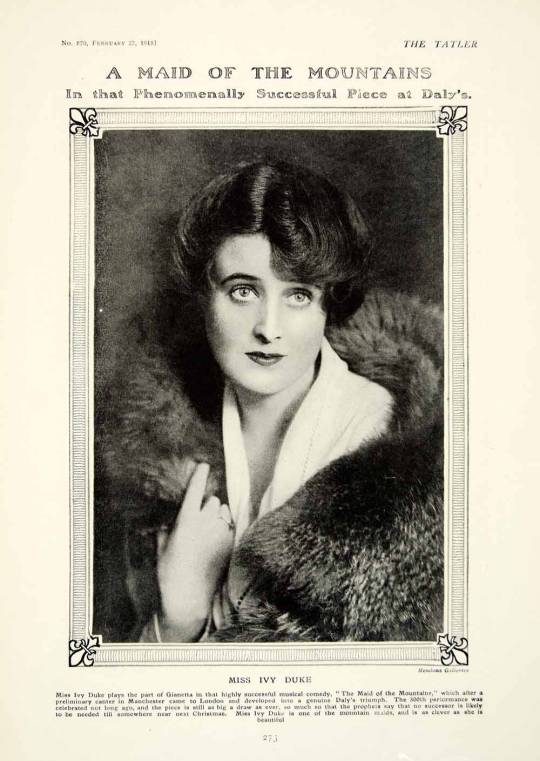
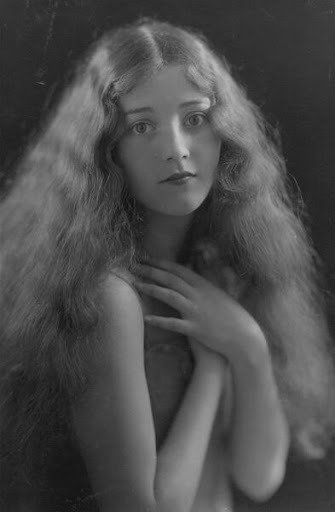

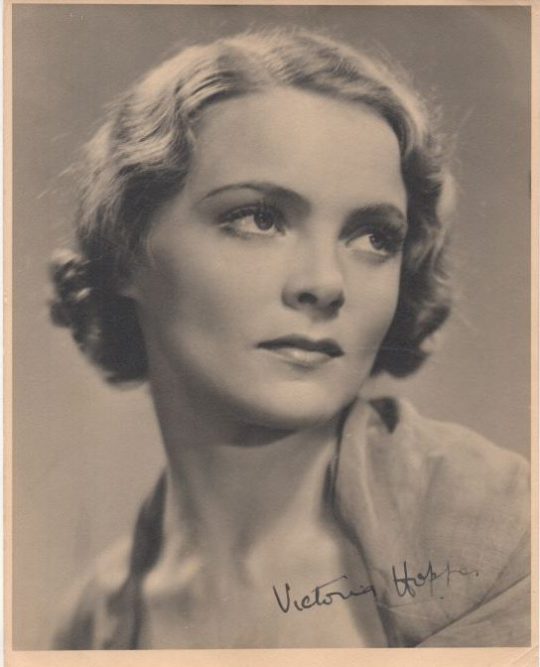
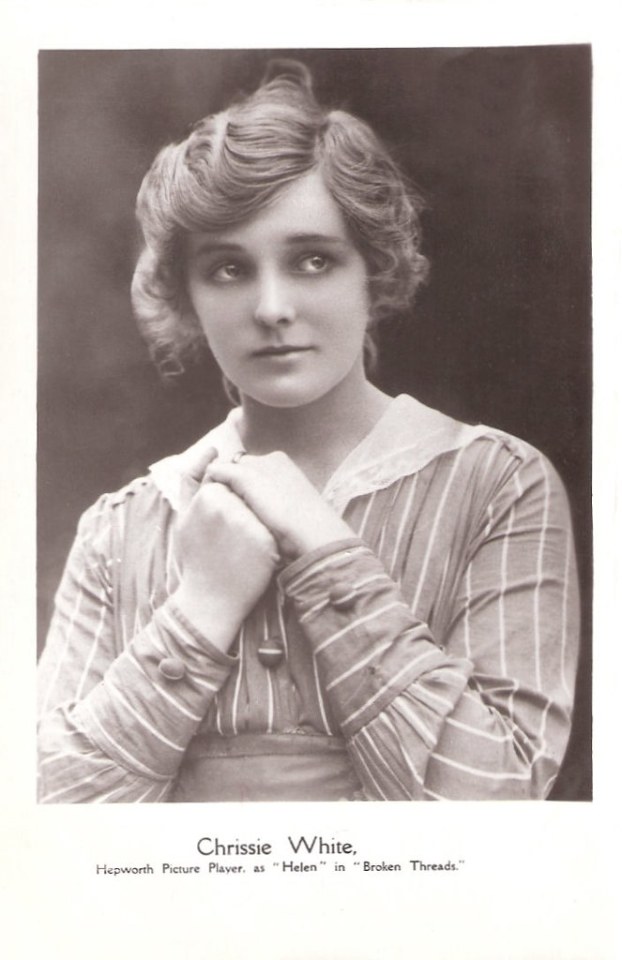
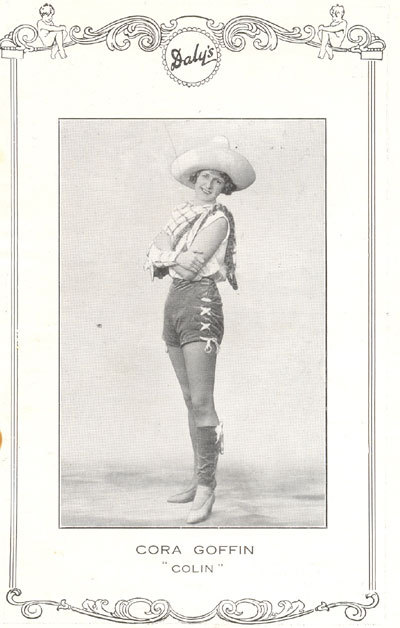
Sons Of The Silent Age. Part One.
1) Ivy Duke (1896-1937) starred in the 1920 hit film The Lure of Crooning Water. She drank herself to death after her career took a downward turn.
2) Sybil Rhoda (1902-2005) starred in Alfred Hitchcock’s Downhill opposite Ivor Novello. Interviewed at age 101, she said "I'm amazed I've existed so long. I'm surprised about the whole thing. I can't get over it,"
3) Maurice Elvey (1887-1967) was one of the most prolific film directors in history, making nearly 200 films between 1913 and 1957. During the silent film era, he directed as many as 20 films per year. His adaptations of Sherlock Holmes were praised by Arthur Conan Doyle. In order to film the sinking of a troop ship, Elvey built a water tank in his own back garden, spending two months to fill it up via his kitchen tap.
4) Victoria Hopper (1909–2007) was a British actress popular during the 1930s. From 1934 until 1939, she was married to film director Basil Dean, who grew interested in Hooper due to her resemblance to his former lover Meggie Albanesi (1899-1923). Dean cast her in several major films, which did badly at the box office.
5) Chrissie White (1895-1989) appeared in more than 180 films. White married director Henry Edwards, and they became one of the most newsworthy celebrity couples of the 1920s. They had two children, and remained together until his death in 1952.
6) Cora Goffin (1902-2004) was an actress on the London stage. She acted in two silent films, during which she leapt from a moving horse and threw herself beneath a moving car in Paris. There were reports that she had her legs insured for £20,000 with Lloyd's of London. Goffin married theatre manager Emile Littler in 1933. She became Lady Littler when Emile was knighted in 1974
#shepperton babylon#sepia#1920s#1930s#cora goffin#chrissie white#victoria hopper#maurice elvey#sybil rhoda#ivy duke#vintage photography#matthew sweet#sherlock holmes#arthur conan doyle#alfred hitchcock#the lure of crooning water#old britain#ivor novello#david bowie#henry edwards
15 notes
·
View notes
Text
Today is a very special day, it’s Marilyn’s Birthday! Can you believe that if she were still alive, Marilyn would have been turning 94 years old today – just two months younger than the Queen herself! With each year I always try and write a special post about this amazing woman, who has helped me so much and achieved more than anyone could have imagined in her 36 years. Therefore, I decided to write 94 facts about the Birthday Girl – some you may know, some you may not, all in the hope that genuine things will be learnt and the real Marilyn will be more understood and appreciated.
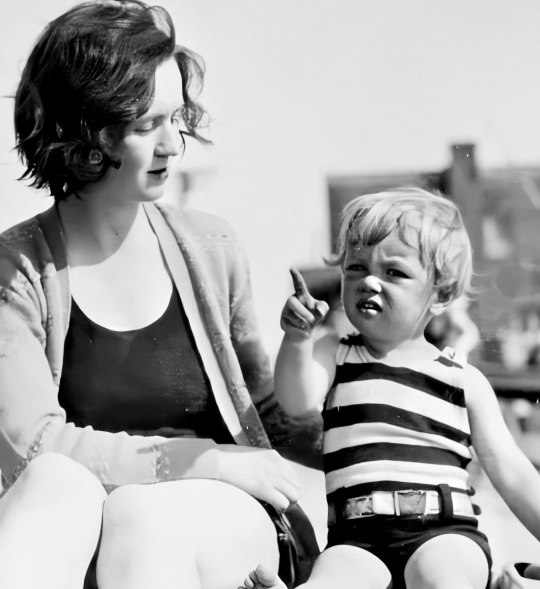
Gladys and baby Norma Jeane spend some quality time together on the beach in 1929.
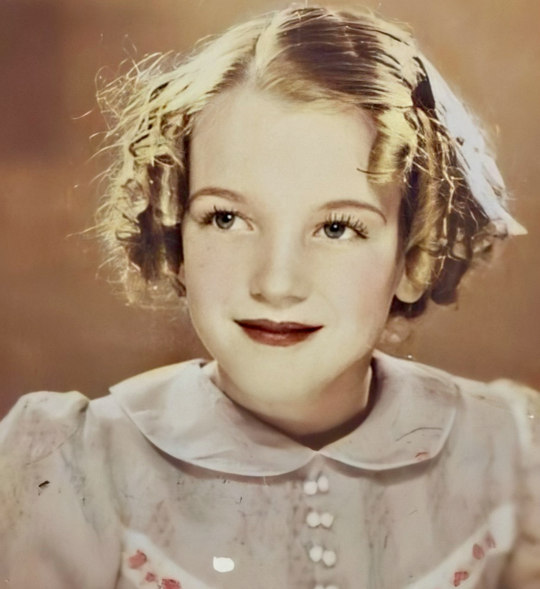
Little Norma Jeane, aged seven, in 1933.

Norma Jeane photographed by David Conover whilst working at the Radio Plane Munitions Factory in either the Fall of 1944 or Spring of 1945.
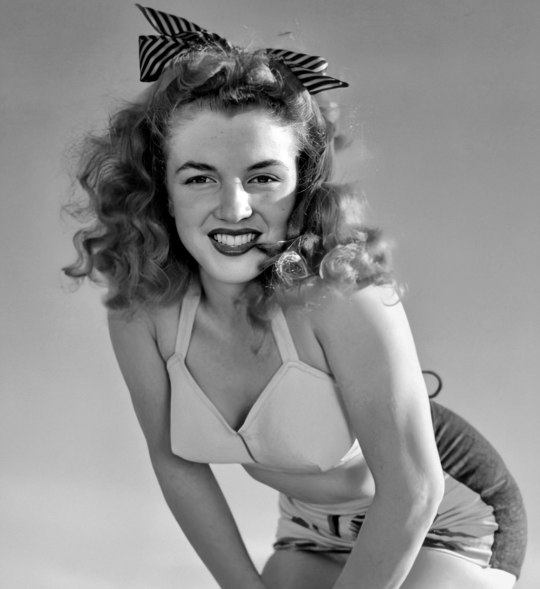
Norma Jeane by Andre de Dienes in late 1945.
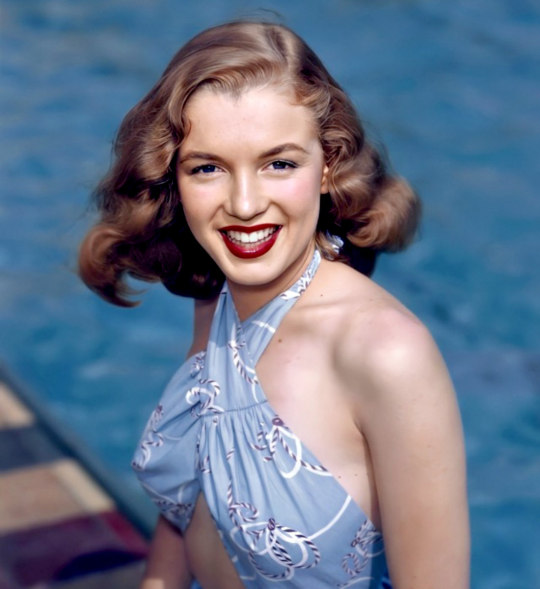
Marilyn by Richard Miller in 1946.

Marilyn on Tobey Beach by Andre de Dienes on July 23rd 1949.
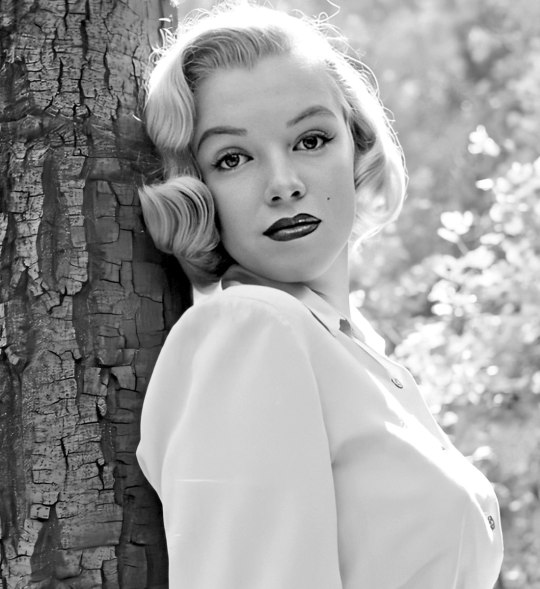
Marilyn by Ed Clark in Griffith Park in August 1950.
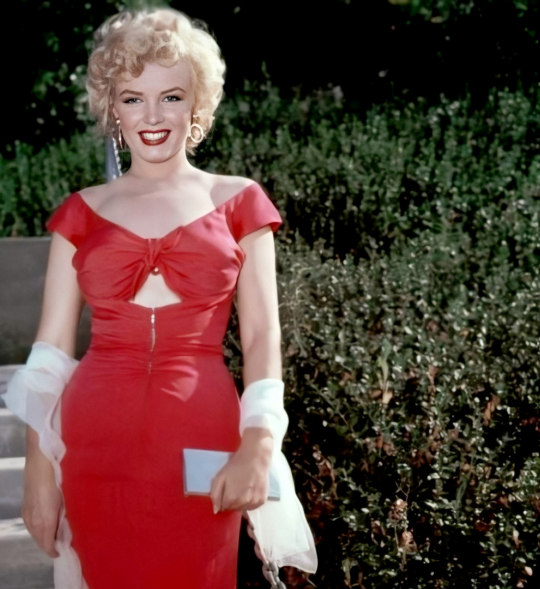
Marilyn attends a Party in Ray Anthony’s home, organized by 20th Century Fox on August 3rd 1952.

Marilyn filming The Seven Year Itch on location in New York City by Sam Shaw on September 13th 1954.
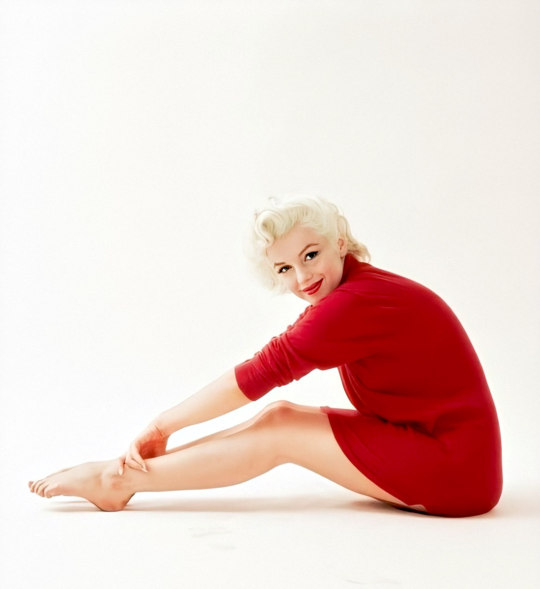
Marilyn by Milton Greene on January 28th 1955.

Marilyn by Cecil Beaton on February 22nd 1956. This was her favourite photo of herself.
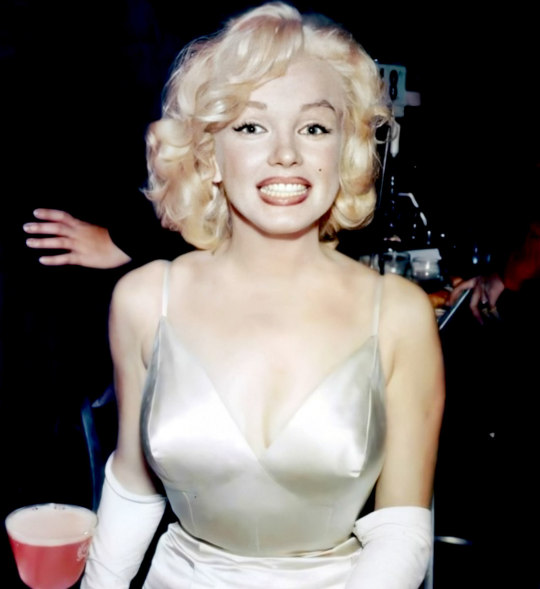
Marilyn attending the Premiere of The Prince In The Showgirl at the Radio City Music Hall on June 13th 1957.
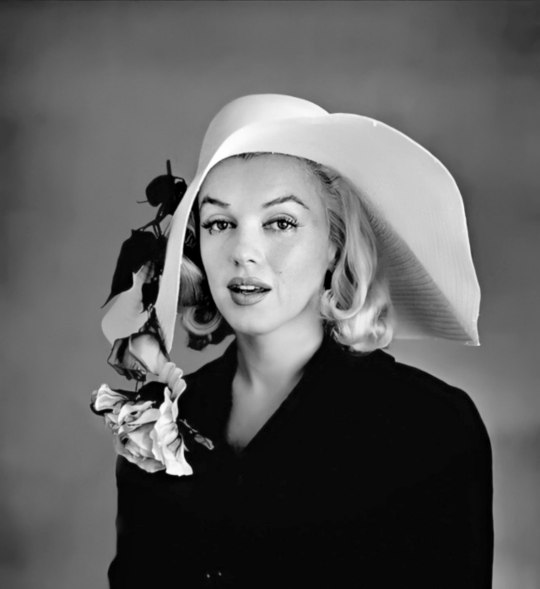
Marilyn by Carl Perutz on June 16th 1958.

Marilyn by Philippe Halsman for LIFE Magazine in October 1959.

Marilyn attends a Benefit for The Actors Studio at the Roseland Dance City on March 13th 1961.

Marilyn on Santa Monica Beach for Cosmopolitan Magazine by George Barris on July 1st 1962.
______________________________________________________________________________
1. Stood at a height of 5’5½”
2. Born in the charity ward of the Los Angeles County Hospital at 9:30 AM on June 1st 1926.
3. Married three times;
– Jim Dougherty: (June 19th 1942 – September 13th 1946) – Joe Dimaggio: (January 14th 1954 – 31st October 1955) (Temporary divorce granted on October 27th 1954) – Arthur Miller: (June 29th 1956 – January 20th 1961).
4. Suffered two confirmed miscarriages; an ectopic pregnancy on August 1st 1957 and miscarriage in December 16th 1958.
5. Suffered with endometriosis very badly, so much so that she had a clause in her contract which stated she would be unable to work whilst menstruating.
6. Starred in 30 films – her last being uncompleted.
7. Favourite of her own performances was as Angela Phinlay in The Asphalt Jungle (1950)
8. Winner of three Golden Globes; two for World Film Favourite – Female in 1954 and 1962 and one for Best Actress in a Motion Picture – Comedy or Musical for her performance as Sugar Kane in Some Like It Hot (1959) in 1960.
9. Her idol was the first Platinum Blonde Bombshell, Jean Harlow.
10. Amassed a collection of over 400 books in her library, ranging from Russian Literature to Psychology.
11. Favourite perfume was Chanel No.5
12. Had two half siblings; Robert “Jackie” Baker (1918 – 1933) and Bernice Miracle (1919) – the former she would never have the chance to meet and Bernice was not informed about Marilyn until she was 19 years old.
13. Former Actor and 20th Century Fox Studio Executive, Ben Lyon created the name Marilyn Monroe in December 1946 – Marilyn after fellow Actress, Marilyn Miller and Monroe after Marilyn’s mother’s maiden name. Ironically enough, Ben starred with Jean Harlow, in her breakout movie, Hell’s Angels (1930).
14. Legally changed her name to Marilyn Monroe ten years later, on February 23rd 1956.
15. Attended The Actors Studio.
16. Third woman to start her own Film Production Company – the first being Lois Weber in 1917 and the second being Mary Pickford in 1919.
17. First had her hair bleached in January 1946 at the Frank & Joseph Salon by Beautician Sylvia Barnhart, originally intended for a Shampoo Advert.
18. Contrary to popular belief, she was technically a natural blonde, not a redhead or brunette. She was born with platinum hair and was very fair until just before her teen years. Her sister described her with having dark blonde hair upon their first meeting in 1944.
19. Another myth debunked – she had blue eyes, not brown.
20. Was one of the few women in the 1950s to use weights when exercising.
21. Wore jeans before it was considered acceptable for women.
22. Her famous mole was real – albeit skin coloured, so she emphasized it using a brown eye pencil.
23. Was a Step-Mother in two of her three marriages to three children – Joe Dimaggio Jr. and Bobby and Jane Miller.
24. Found out she landed the lead role in Gentlemen Prefer Blondes (1953) on her 26th Birthday.
25. Another huge myth dispelled – only actually met President Kennedy four times from 1961 – 1962. Three of them were at public events, with the last being her performance at Madison Square Garden. One of them was at Bing Crosby’s Palm Spring house with various people, so at most (which again, is very unlikely) they had a one night stand – nothing more and nothing less.
26. Was the first Playboy Cover Girl, although she did not actually pose for them, nor give permission for them to be used. Hugh Hefner bought the photograph from a Chicago Calendar Company for $500 and the two never met.
27. Speaking of Playboy, the photo was taken by Photographer Tom Kelley on May 27th 1951 and Marilyn made a total of $50 for the photo shoot. The most famous photo then went on to cause a national sensation after being sold to the Calendar Baumgarth Company and became known as, “Golden Dreams“.
28. In 1955 it was estimated that over four million copies of the Calendar had been sold.
29. Favourite singers were Frank Sinatra and Ella Fitzgerald.
30. Attended the Academy Awards Ceremony only once on March 29th 1951 and presented the award for “Best Sound Recording” to Thomas Moulton for All About Eve (1951) which she also starred in.
31. Performed ten shows over four days to over 100,000 soldiers and marines in Korea in February 1954 – she actually ended up catching pneumonia because it was so cold.
32. Was one of the few Stars who had Director Approval in their Contracts. Some of the names included were, John Huston, Elia Kazan, Alfred Hitchcock, George Stevens, William Wyler, Joshua Logan and Sir Carol Reed.
33. Was pregnant during the filming of Some Like It Hot (1959) – filming finished on November 7th 1958 and she miscarried the following month on December 16th.
34. Featured on the cover of LIFE Magazine seven times during her lifetime;
– April 7th 1952 – May 25th 1953 – July 8th 1957 (International Edition) – April 20th 1959 – November 9th 1959 – August 15th 1960 – June 22nd 1962
35. Favourite bevarage was Dom Perignon 1953 Champagne.
36. By the time of her death, her films had grossed over $200 million, when adjusted for inflation that is the equivalent of $2 billion in 2019.
37. Designer, William Travilla dressed Marilyn for seven of her films, two (*) of them received Oscar Nominations in, “Best Costume/Design, Color“;
– Monkey Business (1952) – Gentlemen Prefer Blondes (1953) – How To Marry A Millionaire (1953) * – River Of No Return (1954) – There’s No Business Like Show Business (1954) * – The Seven Year Itch (1955) – Bus Stop (1956)
38. Spent 21 months of her childhood at the Los Angeles Orphanage, from September 13th 1935 until June 7th 1937.
39. Was one of the first Stars to speak out about child abuse, with her story appearing in movie magazines as early as 1954.
40. Fostered by her grandmother’s neighbours, Ida and Albert Bolender, for the first seven years of her life.
41. Lived in England for four months, during the period of filming for The Prince and The Showgirl (1957) from July 14th 1956 – November 20th 1956.
42. Her Production Company, Marilyn Monroe Productions produced only one film, The Prince and The Showgirl (1957) based on Terrance Rattigan’s play, The Sleeping Prince.
43. Was photographed by Earl Theisen in October 1952 wearing a potato sack dress after being criticized by the press for her outfit choice at The Henrietta Awards in January 1952. A journalist wrote that Marilyn was “insignificant and vulgar“and “even in a potato bag, it would have been more elegant.“
44. Was a huge supporter of LGBT+ rights, saying the following quote about fellow actor and friend, Montgomery Clift to journalist W.J. Weatherby in 1960,
“I was remembering Monty Clift. People who aren’t fit to open the door for him sneer at his homosexuality. What do they know about it? Labels–people love putting labels on each other. Then they feel safe. People tried to make me into a lesbian. I laughed. No sex is wrong if there’s love in it.”
45. Her measurements were listed as the following by her Dressmakers; 35-22-35 and 36-24-24 by The Blue Book Modelling Agency. For the majority of her life she weighed between 117-120 pounds, with her weight fluctuating around 15 pounds, during and after her pregnancies (1957-1960), although her waist never ventured past 28.5 inches and her dress size today would be a UK Size 6-8 and a US Size 2-4 as she was a vintage Size 12.
46. Her famous white halter dress from The Seven Year Itch (1955) sold for $4.6 million ($5.6 million including auction fees) on June 18th 2011, which was owned by Debbie Reynolds. The “Happy Birthday Mr. President Dress” originally held the record for the most expensive dress, when it was sold on October 27th 1999 for $1.26 million. It then went on to be resold for $4.8 million on November 17th 2016, thus regaining it’s original achievement.
47. Was discovered by Photographer, David Conover, whilst working in The Radio Plane Munitions Factory in the Fall of 1944 or Spring of 1945, depending on sources.
48. Now known as the, “Me Too” movement, Marilyn was one of the first Stars to speak out on the, “Hollywood Wolves” in a 1953 article for Motion Picture Magazine entitled, “Wolves I Have Known”. The most famous incident being with the Head of Columbia Studios, Harry Cohn, who requested Marilyn join him on his yacht for a weekend away in Catalina Island. Marilyn asked if his wife would be joining them, which, as you can imagine – did not go down well and her contract was not renewed with the Studio. Marilyn made only one film with Columbia during her six month contract, this being Ladies Of The Chorus (1948) which was shot in just ten days!
49. Loved animals dearly and adopted a variety of pets over the years. These included a basset hound called Hugo and parakeets, Clyde, Bobo and Butch with Husband Arthur Miller. A number of cats including a persian breed called Mitsou in 1955 and Sugar Finney in 1959. Her most famous pet was gifted to her in March or April of 1961 by friend, Frank Sinatra, a little white maltese named Maf. His full name was Mafia Honey, as a humorous reference to Sinatra’s alleged connections to the Mob. After Marilyn’s death, Maf went to live with Frank Sinatra’s secretary, Gloria Lovell.
50. The book she was reading at the time of her death was Harper Lee’s, To Kill A Mocking Bird.
51. One of the movies she starred in was nominated for the Academy Award for Best Picture and won, this being All About Eve (1950) at The 23rd Academy Awards on March 29th 1951. It ended up being nominated for 14 Oscars, a record at the time and has only been matched by Titanic (1997) and La La Land (2016).
52. Her first magazine cover was photographed by Andre de Dienes in December 1945 for Family Circle, released on April 26th 1946.
53. Joined The William Morris Agency on December 7th 1948.
54. Was right handed, not left as often believed.
55. Third Husband Arthur Miller wrote the screenplay for Marilyn’s last completed film, The Misfits (1961) which was originally written as a short story for Esquire Magazine in 1957. After the tragic ectopic pregnancy Marilyn endured in August of 1957, friend and Photographer, Sam Shaw suggested to Miller he alter his short story specifically for her. Ironically the making of this film culminated in their divorce and Marilyn stating,
“He could have written me anything and he comes up with this. If that’s what he thinks of me then I’m not for him and he’s not for me.” 56. Was Author, Truman Capote’s original choice for the role of Holly Golightly in Breakfast At Tiffany’s (1961) however, she was advised to turn it down by her Acting Coach, Paula Strasberg, who did not think the role of a prostitute would be good for her image. Writer George Axelrod, who wrote the Screenplay for Bus Stop (1956) and the play, The Seven Year Itch, ironically ended up being the Screenwriter for this movie.
Capote said this regarding Marilyn,
“I had seen her in a film and thought she would be perfect for the part. Holly had to have something touching about her . . . unfinished. Marilyn had that.”
57. Second Husband Joe Dimaggio had The Parisian Florists deliver red roses on Marilyn’s grave twice a week, for twenty years, from August 1962 until September 1982. Marilyn had told him how William Powell used to do this for Jean Harlow after her death and he reportedly vowed to do the same after their Wedding Ceremony. After the 20 years he then donated to a children’s charity, as he thought it would be a nice way to honour her memory. They also created the flower arrangements for her casket at her funeral.
58. The following five Directors directed Marilyn in more than one movie;
– John Huston; The Asphalt Jungle (1950) and The Misfits (1961) – Richard Sale; A Ticket To Tomahawk (1950) and Let’s Make It Legal (1951) – Howard Hawks; Monkey Business (1952) and Gentlemen Prefer Blondes (1953) – Billy Wilder; The Seven Year Itch (1955) and Some Like It Hot (1959) – George Cukor; Let’s Make Love (1960) and Something’s Got To Give (1962)
59. Was an illegitimate child, which unfortunately was attached with a lot of stigma in the 1920s. Her mother, Gladys, listed her then husband Edward Mortenson on the Birth Certificate, although it is commonly accepted that her real father was Charles Stanley Gifford, as Gladys left Edward on May 26th 1925. Gladys had an affair with him, which ended when she announced her pregnancy and he never acknowledged or met Marilyn, although she tried multiple times over the years to speak with him.
60. Stayed in a number of foster homes during her childhood,
– George and Emma Atkinson; February 1934 – September 1934 – Enid and Sam Knebelcamp; Fall of 1934 – Harvey and Elsie Giffen; January 1935 – March 1935 – Grace and “Doc” Goddard; April 1935 – September 1935 and June 1937 – November 1937 and end of 1940 – February 1942 – Ida Martin; November 1937 – August 1938 – “Aunt Ana” Lower; August 1938 – End of 1940 and February 1942
61. Had her hand and footprints immortalized in cement at Graumans Chinese Theatre on June 26th 1953, with Gentlemen Prefer Blondes (1953) co-star, Jane Russell. Marilyn would place a rhinestone in the dot of the letter “i” as a reference to her character, “Lorelei Lee” but it was sadly stolen. This was an incredibly special moment for her, as she often talked about placing her hands and feet in the many prints there, when she spent her weekends at the Theatre as a child, especially in 1933 and 1934.
“When I was younger, I used to go to Grauman’s Chinese Theatre and try to fit my foot in the prints in the cement there. And I’d say “Oh, oh, my foots too big. I guess that’s out.” I did have a funny feeling later when I finally put my foot down into that wet cement, I sure knew what it really meant to me, anything’s possible, almost.”
62. The famous gold lamé dress worn in Gentlemen Prefer Blondes (1953) and designed by William Travilla, was deemed too risqué by the censors. Unfortunately for fans, this meant that the musical number, “Down Boy” was cut from the film and we only glimpse a few seconds of the dress from behind, on screen.
63. Due to the censors, the original, “Diamond’s Are A Girl’s Best Friend” costume was changed to the now iconic pink dress with black bow. Originally it was to be a diamond encrusted two piece, which was extremely daring for the then Motion Picture Hays Code.
64. Loved Erno Lazlo Skin Cream, Vaseline and Nivea Moisturizer.
65. Had she completed Something’s Got To Give (1962), Marilyn would have been the first Star in a major Motion Picture to appear nude on film. As she passed before it was completed the achievement went to fellow Blonde Bombshell, Jayne Mansfield in, Promises! Promises (1963).
66. Met Queen Elizabeth II in England at the Empire Theater in Leicester Square whilst attending the Premiere of, “The Battle Of The River Plate“ on October 29th 1956.
67. The Misfits (1961) was both Marilyn and Clark Gable’s last completed films. Clark died 12 days after filming finished, on November 16th 1960. The film was released on Clark’s would be 60th Birthday, February 1st 1961 and Marilyn passed 18 months later.
68. As Marilyn died before the completion of Something’s Got To Give (1962) it ended up being remade with Doris Day and James Garner, entitled, Move Over Darling! (1963). The film was originally intended to be a remake of, My Favourite Wife (1940) which starred Cary Grant.
69. Signed a recording contract with RCA Records on September 1st 1953. One of her songs from River of No Return (1954) entitled, “File My Claim” sold 75,000 copies in its first three weeks of release.
70. Was admitted to the Payne Whitney Psychiatric Clinic on February 10th 1961 by her then Psychiatrist, Marianne Kris. Originally thought to be for rest and rehabilitation, following her divorce from Arthur Miller and the strain of filming The Misfits. However, Marilyn was placed on the security ring and held against her will. Thankfully, she was able to contact ex Husband, Joe Dimaggio, who stated he would, “Take the hospital apart brick by brick” if she was not released and after three days of emotional trauma, she left.
71. Visited the following Countries;
– Canada – (July – August 1953) – Japan (February 1954) – Korea (Feburary 1954) – England (July – November 1956) – Jamaica (January 1957) – Mexico (February 1962)
72. Purchased her only home, 12305 Fifth Helena Drive on February 8th 1962, where she would tragically pass just under 6 months later.
73. The home had the following tile located on the front paving entrance saying, “cursum perficio” meaning, “my journey ends here.” The title is still there to this day.
74. Her final interview was published in LIFE Magazine on August 3rd 1962 and was written by Richard Meryman.
75. Aside from her millions of fans, had a staunch group of supporters affectionately known as, “The Monroe Six” who followed Marilyn around New York during her time there. Their nickname for Marilyn was, “Mazzie” and they became so acquainted that Marilyn actually once invited them for a picnic at her home.
76. First married at just sixteen years old, this was to avoid returning to the Orphanage she had spent almost two years in as a child.
77. Supported numerous charity events, most famously riding a pink elephant in Madison Square Garden, to support the Arthritis and Rheumatic Affections Association on March 30th 1955.
78. Left 25% of her Estate to her then Psychiatrist, Marianne Kris and 75% to mentor and friend, Lee Strasberg. For reference, her Will was last updated on January 1961 – a month before she entered the Payne Whitney Hospital on the advice of Marianne Kris.
79. At the time of it’s release, The Misfits (1961) turned out to be the most expensive black and white movie ever made, costing a budget of $4 million dollars.
80. The Premiere of The Seven Year Itch was held on her 29th Birthday, on June 1st 1955, she attended with ex Husband, Joe Dimaggio.
81. Laid to rest at Westwood Village Memorial Park Cemetery on August 8th 1962 at 1:00 PM, with friend and mentor Lee Strasberg delivering the Eulogy.
82. Although so often associated with diamonds, actually wasn’t that fond of jewellery stating, “People always ask me if I believe diamonds are a girl’s best friend. Frankly, I don’t.”
83. Spent her 36th Birthday filming Something’s Got To Give (1962) and then attending a Charity Event for muscular dystrophy at the Chavez Ravin Dodger Stadium, which also happened to be her last public appearance.
84. Whilst recovering in hospital from an appendectomy in April 1952, Marilyn asked long time Makeup Artist and friend, Allan “Whitey” Snyder to do her makeup, should she pass before him. She gave him a gold money clip with the inscription, “Whitey Dear, while I’m still warm, Marilyn” and he did fulfill this promise to her.
85. Converted to Judaism for third husband, Arthur Miller on July 1st 1956.
86. Despite appearing in 30 films, she only actually dies in one, that being her breakout movie, Niagara (1953) where her character Rose Loomis, is strangled by her Husband George, played by Joseph Cotten.
87. Moved to New York City in 1955 and attended The Actors Studio, after breaking her Film Contract with 20th Century Fox. This was for a number of reasons, mainly years of low pay, unsatisfactory scripts and lack of creative control. A new contract would finally be reinstated on December 31st.
88. Repurchased a white Baby Grand Piano that her mother, Gladys, owned during their time living together in 1933. After Marilyn passed it would then be sold at the Christies Auction of her Estate in 1999 to none other than, Mariah Carey for $632,500.
89. Wore long hair pieces in River of No Return (1954) and a medium length wig in The Misfits (1961). The first I can only assume was due to the time period and setting of a Western and the second was due to the bleach damage her hair had suffered. After the filming in 1960, she wore the wig a couple of times in public events and then reverted back to her normal hair.
90. Like all students, it was tradition to perform in front of each other in The Actors Studio and on February 17th 1955, Marilyn acted out a scene from “Anna Christie” with Maureen Stapleton. Although it was an unwritten rule that students were not meant to applaud one another, an eruption of cheers and clapping happened after Marilyn had finished.
“Everybody who saw that says that it was not only the best work Marilyn ever did, it was some of the best work ever seen at Studio, and certainly the best interpretation of Anna Christie anybody ever saw. She achieved real greatness in that scene.”
– Actor Ellen Burstyn, on recalling Marilyn’s performance.
91. Used the pseudonym, “Zelda Zonk“, when trying to remain incognito.
92. Marilyn’s mother, Gladys Baker, suffered from Paranoid Schizophrenia and after various stays in institutions, was declared insane on January 15th 1935, when Marilyn was just 8 years old. After 10 years she was released and managed to retain various cleaning jobs and had developed an intense interest in Christian Science. However, by 1951 she was back in various institutions and would stay in the Rockhaven Sanitarium until 1967. Even after death, Marilyn continued to cover her mother’s care payments and Gladys would go on to outlive her for 22 years.
93. Favourite photograph of herself was taken by Cecil Beaton on February 22nd 1956.
94. Last professional photos were taken by Bert Stern, famously known as “The Last Sitting” for Vogue Magazine on June 23rd, July 10th and 12th 1962. Allan Grant took the LIFE Magazine interview pictures in her home, on July 4th and 9th 1962. Whilst George Barris took his photos for Cosmopolitan Magazine, the previous weekend on the 29th and 30th of June, until July 1st 1962. ______________________________________________________________________________
To those of you who took the time to read through all 3000+ words, thank you! It truly means more to me than you know and I really hope it’s shed some light on the truly special person Marilyn was and made you hold a good thought for her on her big day.
Follow me at;
BLOGLOVIN
INSTAGRAM
TUMBLR
TWITTER
YOUTUBE
For inquiries or collaborations contact me at;
Happy 94th Birthday Marilyn! Today is a very special day, it's Marilyn's Birthday! Can you believe that if she were still alive, Marilyn would have been turning 94 years old today - just two months younger than the Queen herself!
#1940s#1950s#1960s#angel#blonde bombshell#classic hollywood#hollywood#icon#legend#marilyn#marilyn monroe#norma jeane#norma jeane baker#old hollywood
202 notes
·
View notes
Text
OLIN HOWLAND
February 10, 1886

Olin Ross Howland was born in Denver, Colorado. His father was one of the youngest enlisted participants in the Civil War. His older sister was the famous stage actress Jobyna Howland. As a young man, he learned to fly airplanes from the Wright Brothers!

From 1909 to 1928, Howland appeared on Broadway in musicals. His first screen appearance was 1918′s Paramount short Hick Manhattan. He appeared under the name Olin Howlin. He went on to make more than 200 film and television appearances.

He and Irving Bacon (Will Potter, Ethel’s father) are the only actors to appear in both the 1937 and 1954 versions of A Star Is Born. The two were also in the legendary 1939 film Gone With The Wind.
He also appeared with William Frawley (Fred Mertz) in the less-than-classic Ambush (1939) and Crime Doctor’s Manhunt (1946).

He played the same role (Mr. Davis, Amy March's schoolteacher) in both the 1933 and 1949 versions of Little Women.

Two of his very last roles were in classic 1950s science fiction films: first as the alcoholic in Them; then as the rancher who is the first victim of The Blob (1958).

He made his television debut in a 1952 episode of “Hopalong Cassidy” (above left with William Boyd and Edgar Buchanan, right).

One of his most memorable roles was also one of his last; he appeared on “I Love Lucy" in “First Stop” (ILL S4;E14) filmed on November 11, 1954 and first aired on January 17, 1955. Howlin played the owner of One Oak, a broken down motel in the middle of nowhere, at which the Ricardos and Mertzes are forced to stay at for the night. This was his only appearance with Lucille Ball.

From 1958 to 1959 he was back at Desilu as the recurring character of Charley Perkins in “The Real McCoys”. He did five episodes of the series.

His final screen appearance was posthumously on an episode of “Father Knows Best” aired on October 5, 1959. Howland had died on September 20, 1959 at age 73.
Howland never married and had no children.
#Olin Howland#Lucille Ball#I Love Lucy#Father Knows Best#First Stop#The Real McCoys#Desilu#Hopalong Cassidy#The Blob#Little Women#Gone With The Wind#Hick Manhattan#William Frawley#Desi Arnaz#Vivian Vance
7 notes
·
View notes
Text
“James Bond: Los superhombres están entre nosotros” [Primera Plana, 19.04.1966]
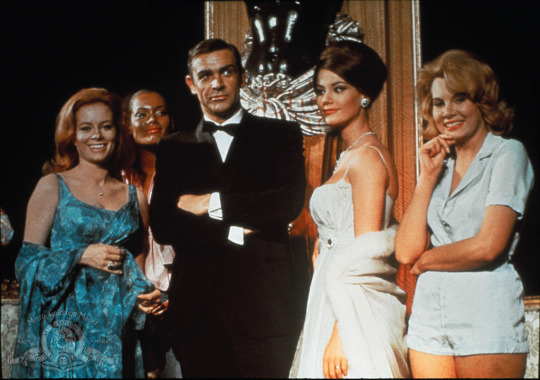
Cinco mil años atrás, los egipcios organizaron un óptimo servicio secreto e incluyeron el espionaje entre las ciencias ocultas. Durante el reinado del faraón Thutmose III, un capitán llamado Thute introdujo 200 soldados en Jafa, disimulándolos bajo un cargamento de harina, gracias a los informes de sus agentes. En la Ilíada, Homero canta a una de las obras maestras del espionaje: el Caballo de Troya. En el siglo XV, Juana de Arco fue traicionada por el Obispo Pierre Cauchon de Beauvais, un espía pagado por los ingleses. Pero las complejidades de la guerra moderna crearon divisiones dentro de esa ciencia vasta y deleznable.
El espionaje político, por ejemplo, persigue informaciones sobre industria, agricultura, comercio, trabajo, transportes y, por supuesto, política. En su ensayo La sociedad desnuda, Vance Packard analiza cómo las grandes corporaciones de USA establecieron hasta con los baños una vigilancia de sus empleadas y obreras a través de micrófonos ocultos. Pero fue Joseph Fouché, ministro de Policía de Napoleón, el verdadero inventor de la estrategia que luego heredaría James Bond: durante el Consulado y el Imperio consiguió desbaratar todos los complots contra su príncipe.
En el terreno militar, el privilegio de la creación suele adjudicarse a Federico el Grande, quien estableció un sólido cuerpo de agentes separado en cuatro categorías: los espías comunes, proletarios y campesinos que pretendían así ganarse algún dinero extra; los espías dobles, que trabajaban simultáneamente para potencias enemigas y cuya misión era confundir al adversario; los de alto rango, oficiales del Ejército, nobles y embajadores, que cobraban sueldos altísimos; y los espías a la fuerza, por lo general jefes de pueblos conquistados que debían pasar datos contra su voluntad. Federico solía decir: "El mariscal de Soubise es siempre seguido por cien cocineros; a mí me preceden cien espías".
La Primera Guerra tuvo su heroína del espionaje, Mata Hari, glorificada después por Greta Garbo y Jeanne Moreau; es curioso que su entregador fuera el agente alemán Walter W. Canaris a quien Hitler concedió el rango de almirante y designó jefe de la Inteligencia Exterior, a las órdenes de von Ribbentrop.
A fines de la Segunda Guerra, los escarceos bélicos entre la Unión Soviética y los Estados Unidos se concentraron en sus propias centrales de espionaje: la terrible NKVD, con sede En Moscú, era conducida por el mariscal Beba (a su muerte, en 1953, fue reorganizada y rebautizada como KVD); la CIA (Central Intelligence Agency) se fundó en 1947 y prosperó luego a las órdenes de Allen Dulles; un año después de su nacimiento, un sensacional caso de espionaje se ventiló en USA: Whittaker Chambers, ex comunista, denunció que Alger Hiss, funcionario del Departamento de Estado, pasaba informes a la NKVD.
Nace el Superhombre
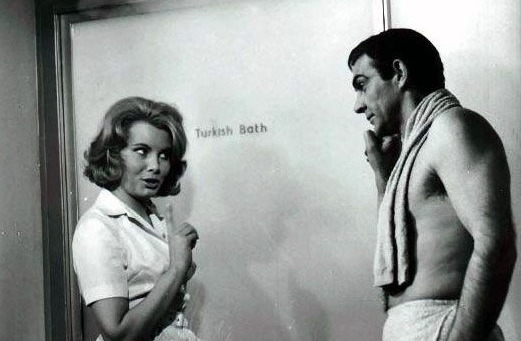
Toda esa rara secta de próceres más o menos embozados encontró, por fin, hace 14 años, un semidiós que los resumía: fue en la primavera de 1952 cuando Ian Lancaster Fleming, ex agente del Naval Intelligence británico, escribía las páginas iniciales de Casino Royale e introducía al personaje James Bond en el universo de los mitos. El parto se consumó apaciblemente en una de las islas del Caribe: Ocarabesa, en Jamaica.
La semana pasada, Buenos Aires se sacudía a su vez con las consecuencias de ese acto sereno pero artero: en la sala del Gran Rex se estrenaba Operación Trueno, el cuarto film de la serie Bond, y los 83 mil espectadores convocados durante los primeros siete días de exhibición festejaban con carcajadas o silbidos la indemnidad de este nuevo Superhombre. Más de doce años tardó esa glorificación en trasladarse de Londres a las playas sudamericanas: en 1953, uno de los clubes londinenses consagrados a la adoración de Bond —con 1.200 socios— libró batalla En Sobo contra una banda de eduardianos que hablan tratado de mancillar al héroe; treinta muchachos terminaron en el hospital. El 17 de abril de 1963, el Gran Rex de Buenos Aires cerraba la primera semana de exhibiciones de El satánico doctor No con una recaudación apenas superior al medio millón de pesos y un total de 10.803 espectadores; Bond se reivindicó el 22 de mayo de 1965, cuando el primer balance semanal de Goldfinger (Dedos de oro, tercer film del ciclo) reveló la asistencia de 52.429 personas y un ingreso de 5.429.022 pesos, excluidos los impuestos.
Entre el sábado y el domingo últimos, no menos de sesenta espectadores consultados por esta revista parecían estar dispuestos a fundar un Club de Amor a Bond o a inscribirse en los que hubiera. Todavía extasiada por los recursos que acaba de exponer el ídolo, Adriana Divarian, de 45 años, madre de tres hijos, admitió que Sean Connery, el escocés que encarna a Bond, "representa el ideal masculino" y que el propio personaje es algo así como un soplo de Dios. "Lástima que trate tan mal a las mujeres —suspiró—. Ojalá cambie algún día." Miguel Bersaiz, un estudiante de arquitectura de 20 años, explicó: "Admiro su seducción. Pero lo que más me fascina son sus rasgos de sadismo". Tulio Suárez, de 31 años, agente publicitario, opinó que Bond "sintetizaba todas nuestras ansias, pese a lo sobrenatural e increíble que es, pensándolo un poco".
Es posible que nadie lo piense demasiado; de otro modo no podría explicarse que la ficción propuesta por Ian Lancaster Fleming golpee tanto la realidad, se entronque con ella en un juego de siniestros mimetismos. Cuando en 1957 un periódico inglés que folletinizó la novela De Rusia con amor incluyó una variante en el final e insinuó que James Bond habla muerto, la redacción del diario fue acosada por centenares de iracundos que exigían una retractación. Asediado por las protestas, Fleming tuvo que demandar al periódico por daños, y dar fe de que 007 estaba sano y salvo. Desde que Arthur Conan Doyle decidió eliminar a Sherlock Holmes (a manos de Moriarty, un símil del señor Goldfinger), no se repetía un fenómeno semejante. Esta vez, en cambio, los admiradores de Bond no se contentan con su supervivencia: se apoyan en él para extraer sus propios beneficios.
Los provechos no consisten sólo en copiar sus desplantes y en drogarse a su conjuro. Los security men de Inglaterra pidieron aumento de sueldos invocando los riesgos a que están expuestos. En una revista del sindicato de empleados estatales escribieron: "Se debe pensar que verdaderamente estos hombres viven una vida de James Bond y que están de servicio incluso cuando descansan. Cobran actualmente 900 libras esterlinas al año como máximo; deben vestir con mucho decoro, si no tan rebuscadamente como el famoso personaje de Fleming; deben también afrontar gastos excepcionales y están expuestos a continuas insidias".
Otro ejemplo: Allen Dulles, jefe de la Central Intelligence Agency, confesó a un redactor de Life que desde que Jacqueline Kennedy puso en sus manos un libro de Fleming, se interesó cada vez más en los ingenios técnicos de 007: "Por ejemplo —reconoció—, el artefacto que Bond instala en los automóviles de sus adversarios para seguir su itinerario, inclusive a muchos kilómetros de distancia. Encomendé a nuestros expertos el estudio en el laboratorio de un aparejo semejante".
Los comerciantes, a su vez, no vacilan en exprimir la historia bondista, y, en París y Nueva York, abarrotan el mercado con batas celestes —el color que más sienta a Connery— y nuevos modelos de prendas sport. Con todo, el regalo más apreciado por los neoyorquinos, en la Navidad de 1964, resultó una réplica de la valija diplomática que Bond lució en De Rusia, y que Macy's vendió por centenares. A mediados del 65, cuando su fama había impregnado todos los estratos sociales y atrapado a los fanáticos del cine, la marca del champagne preferido de Bond, Taittinger, aumentó su venta en un 40 por ciento con respecto al año anterior, y en un 30 por ciento las importaciones de su vodka favorito. Los cuerpos casi desnudos de sus amigas (Ursula Andress, Daniella Bianchi) ilustraron las páginas de las lujosas publicaciones que exaltaban el fiction's sexiest Bond.
El éxito de las películas de Bond no es, sin embargo, sino el efecto directo que provocaron las trece novelas de la serie, clausurada por la muerte de su autor en 1964. Hasta el año pasado se habían vendido 25 millones de ejemplares de esas trece novelas, traducidas a dieciocho lenguas, incluidas el catalán y el turco. La cifra equivale a la edición total de las obras de Balzac y a todas las de Hemingway. En mitad de ese boom, es posible que John F. Kennedy haya contribuido a engrosar el torrente de adeptos cuando, en conferencia de prensa, situó a Fleming entre sus autores de cabecera y a From Russia entre las diez obras que salvarían a la humanidad del desastre atómico. Curiosamente, Kennedy y Lee Oswald, su presunto asesino, tenían gustos análogos. Semanas antes del crimen, Oswald tomó prestadas de la biblioteca pública de Dallas todas las historias de 007.
La semana pasada, en el vestíbulo del Gran Rex, la mitad de los espectadores confrontados no habían leído una sola novela de Fleming, pero casi todos prometieron una inmediata adhesión literaria, Cabría determinar, pues, los niveles de predominio: hasta qué punto Connery es Bond, o Bond es Connery.
El vicario de 007
Pero no, Connery y Bond no se parecen realmente, salvo por sus ascendentes escoceses. Hijo de un obrero textil de Edimburgo, Sean Connery abandonó la escuela a los 13 años para ganarse una vida muy dura como lustrador de ataúdes, salvavidas, marinero, modelo, boxeador de peso liviano, aprendiz de impresor y, finalmente, como comediante de cuarto orden en una compañía de comedias musicales que cantaba South Pacific. En 1957 tuvo que optar entre ser un centro delantero profesional o un actor aceptable. Resolvió inscribirse en una escuela de arte dramático y estudiar esforzadamente: al cabo de un año, lo citaron para pequeños papeles y luego consiguió encaramarse como primera figura en los teatros provinciales de Inglaterra. Los fantasmas de Shakespeare (Macbeth, Hotspur) vivieron bajo su piel más veces que James Bond.
A los 26 años recaló por fin en el cine, contratado por la Fox, pero sólo para languidecer en una retahíla de films mediocres que culminaron con una pequeña parte en El día más largo.
Poco antes, Fleming había cedido, por fin, a las melosas presiones de los productores Harry Saltzman, canadiense, y Albert Cubby Broccoli, norteamericano, y consintió en venderles los derechos de sus novelas. Elegido en un referéndum, esa mera debilidad del novelista, ante el dinero que le prometía el cine, cambió la vida de Connery. Desde entonces trató de entender quién era Bond: "Fleming me contó —dijo el actor— que, al concebir el personaje, 007 era un simple instrumento de la policía, muy recto, sencillo, distante de cualquier forma de ingenio; en suma, un funcionario capaz de cumplir con su trabajo al pie de la letra. El snobismo del autor, sin embargo, acabó por transferirse al héroe".
La vida de Connery no cambió demasiado desde entonces, salvo por el hecho de que sus ingresos ascendieron de 18 mil dólares (la cifra que le pagaron por El satánico doctor No) a un millón. Sigue casado con Diane Cilento, conviviendo con un hijo de ella y otro hijo de los dos, cocinando su goulash y ensillando sus caballos. Pero mientras tanto, los imitadores cundieron.
Los hijos de Bond

A fines de 1964, la certeza de que Bond era sinónimo de oro tentó irresistiblemente a los productores de Cinecittá, en Roma: con apuro, encomendaron algunos plagios paródicos y se los endilgaron a Totó (007, de China con tenor) y a Vittorio Gassman (Slalom). En esas dos empresas invirtieron medio millón de dólares, pero los artefactos de cartón que montaron en torno de sus personajes ahuyentaron al público. El negocio resultó un fiasco, y los pequeños Bond que nacieron en los meses siguientes ya no se exportaron de Italia. Por entonces, Saltzman y Broccoli gastaron tres millones de dólares en la filmación de Goldfinger, y eso convenció a los competidores de que para acabar con Bond hacían falta juguetes caros y actores caros. Sólo Hollywood estaba en condiciones de librar semejante batalla.
En la primavera de 1965, por lo menos cuatro imitadores ingratos de 007 ya parecían listos para salir a estrangularlo: sus nombres eran Napoleon Solo, Derek Flint, Matt Helm y Modesty Blaise. Un detalle los unía al Padre Todopoderoso: o defendían una sigla, o combatían contra una sigla. El enemigo de Bond era SPECTRE; Solo, agente de la UNCLE, enfrentaba al agente TRUSH; Flint, miembro de ZOWIE, se oponía a GALAXIE; Modesty Blaise ponía los bandidos de su equipo FILET al servicio de Su Graciosa Majestad. Sólo Matt Helm sigue oscilante, todavía, entre depender de la CIA o fundar su clan propio.
Los otros elementos comunes son el sexo y las armas secretas; al Aston Martin de usos múltiples imaginado por el novelista Ian Fleming, los creadores de Flint oponen un encendedor que cumple 82 funciones (revólver, máquina fotográfica, soplete, contador geiger, microscopio, rayo laser, radio-emisora) y hasta una función extra, si el caso lo exige: la de encendedor propiamente dicho. Helm dispone de un revólver que dispara hacia atrás y viste un saco cuyos botones son cartuchos de dinamita; Modesty Blaise, extraída por el realizador Joseph Losey de una tira cómica que se publica en The Evening Standard, emplea un encendedor lanzallamas, un vaporizador de perfume que puede convertirse en máscara de oxígeno y un lápiz de labios que dispara flechas; pero ninguno de sus argumentos es más fuerte que the Nailer, el Inmovilizador, un cierre relámpago en el rompevientos de Modesty, que al abrirse deja sus pechos al descubierto e inmoviliza a los enemigos.
Es en el territorio sexual donde se despliegan los mayores refinamientos: a gloria de Bond consiste en su aptitud para vencer la resistencia de mujeres asexuadas o francamente lesbianas (como la Pussy Galore de Goldfinger); sus herederos no parecen tener otro remedio que apelar a la mecanización del amor. La eficacia de Napoleon Solo se mide por el número de mujeres que se le rinden (una decena en su última aventura, El espía con mi cara); la de Flint, por una cama de cinco plazas donde se tiende con cuatro fidelísimas amigas. Matt Helm, en cambio, duerme en un vasto diván circular y móvil que le permite estar siempre cerca de sus juguetes mecánicos: al despertarse, el diván atraviesa el cuarto, y el tabique que da a un jardín desaparece; luego, el colchón se levanta y desliza a Helm hacia una piscina cuidada por una graciosa náyade. Es la apoteosis del reposo del guerrero. Pero además, como Modesty Blaise, Helm confía en sus talentos naturales: lava y cepilla a su enjambre de admiradoras, las divierte con un sofisticado strip-tease y les canta en voz baja. Como se define a sí mismo, es el espía que viene del show.
Sin embargo, la erudición de estos semidioses en disciplinas aparentemente inútiles es lo que más impresiona al público. Bond puede reconocer hasta por el tacto el año de cosecha de un Dom Périgord o de un Pommery; Flint distingue la diferencia que hay entre dos platos de bouillabaisse por los miligramos extra de ajo que le añaden los taberneros marselleses; Modesty Blaise conoce al dedillo las fórmulas químicas de todos los perfumes posibles.
Los presupuestos bajos que el cine francés o el italiano consagraban a estos devoradores superhombres acabó por excluirlos de ese nuevo Mercado Común que se llama Club Atómico, Club de Vuelos Espaciales o Club de los Grandes Espías. Tampoco la estrategia de resucitar a Fantomas o de armar a Lemmy Caution con versos de Paul Eluard (en Alohaville) dio el menor resultado. Pero el combate de los hijos de Bond contra su Padre Todopoderoso no se libraba sólo en el campo de los efectos especiales, de las escenografías gigantescas o del lujo visual. A principios del 85, se convirtió también en un problema de estrategia empresaria.
El actor que iba a encarnar a Bond fue elegido por Saltzman y Cubby Broccoli mediante un referéndum que propició el Daily Express en Londres: se publicaron las fotografías de diez jóvenes comediantes británicos y se instó a los lectores a elegir. Una mayoría del 62 por ciento optó por Sean Connery; el segundo clasificado, un tal Terence Cooper, consiguió sólo el 7 por ciento. Cuando tuvo que designar al intérprete de su primer semidiós, Derek Flint, la Columbia concentró su referéndum en Los Angeles y aceptó al sofisticado cowboy que habían seleccionado los diez mil californianos encuestados: James Coburn. Los expertos habían decidido que Flint fuese un personaje paródico, capaz de ridiculizar a Bond con sus propias armas. Pero los resultados fueron inesperados: en el primer mes de exhibición, el éxito de Flint era arrasador, casi igual al de Bond. Pero después de ese tope, el público parecía fatigarse. Fue entonces cuando se pensó en Matt Helm, un play-boy del espionaje creado por Donald Hamilton. La Columbia eligió el cuarto libro de la serie Helm, The Silencers (Los silenciadores), y encomendó el papel a Dean. Martin. Como explicaron sus agentes de relaciones públicas, la lucha contra Bond iba a librarse ahora en todos los campos: un actor famoso contra otro, un presupuesto de 6 millones de dólares contra los 5 y medio de Operación trueno. Pero el punto de partida para el ataque no se había modificado: Helm salía con la misma consigna de Flint, derrotar a Bond por el ridículo.
Más miel para los dioses
En los tiempos de Dashiell Hammett y de Eric Ambler —poco antes de la Segunda Guerra—, el espía o el detective privado eran apenas seres duros, capaces de incurrir en el Mal. Ian Fleming agregó a esas cualidades la certidumbre de que un espía puede ser todopoderoso, salvo ante la Reina o ante su jefe. La omnipotencia encandiló a los lectores, les despertó una sed que ni siquiera James Bond podía saciar: según los sociólogos, la avalancha de espías-semidioses se debió no tanto a que encarnaban los Sueños de las Masas sino a una simple condición humana, el hubris o ciega seguridad de uno mismo.
Los ojos devoradores de aventuras consiguieron que el género del espionaje prosperara y arrasara el mercado. El más importante de los novelistas que surgió a la zaga de Fleming (y su real contracara) es el británico John Le Carré, seudónimo de David John Moore Cornwell, un funcionario del Foreign Office que nació en 1931. La fama de Le Carré se consolidó con su tercera novela, The Spy Who Came in From the Cold (El espía que no vuelve, 1963), una historia ambientada en el Berlín de la Guerra Fría, cuya versión cinematográfica acaba de estrenarse en los Estados Unidos. El clima de sordidez y desvalimiento en que se mueve Alee Leamas, el viejo agente de Spy, quizá tenga dos antecedentes: Raíces en el fango (Confidential Report, 1956, de Orson Welles), y Los espías (Les espions, 1957, de H. G. Clouzot).
Para Le Carré, el espía es un hombre común, ni atleta ni buen mozo, ni patriótico ni buscador de gloria. Elige su oficio por rutina, por necesidad de dinero. Son parte de ese suburbio de la sociedad en el que también entran los delincuentes. En el caso inglés (los antihéroes de Le Carré están, como Bond, al servicio de la Reina), esos espías denostados, arrojados al infierno por la sociedad, sometidos a la soledad y al miedo, desvalidos de armas electrónicas o complicados equipos, trabajan para God, King and Country. Las culpas no son transferidas a los espías, simples empleados del Mal, sino a quienes fabrican, inventan y mantienen las redes del espionaje. El espejo de los espías (1965, su última novela; las otras fueron Llamada para el muerto, 1961, y A Murder of Quality. 1962) es el más violento anatema contra el espionaje, como institución, que se haya escrito. Para Le Cerré, cada caso es una auténtica tragedia, y por lo tanto se niega a toda trampa. Su grandeza debe buscarse, ante todo, en el hecho de que el Mal asume la forma de un laberinto del que es imposible escapar: y en tal sentido, más que un heredero de Fleming, Le Carré puede ser visto como un epígono de Kafka.
Otro de los novelistas uncidos al aluvión es Len Deighton, cuya columna sobre recetas de cocinas aparece en The Observen de Londres. Menos afecto que Le Cerré a la disciplina que exige el oficio de narrar en serio, Deighton ya ha vendido un millón y medio de ejemplares de sus cuatro novelas y sus das recetarios. El dúo de productores Saltzman-Broccoli (que monopolizó definitivamente el mercado del espionaje al lanzar también al actor Michael Caine en The Ipcress File, otra obra de Deighton) acaba de comprar en un cuarto de millón de dólares los derechos cinematográficos de The BiIlion Dolar Brain, una novela que el Daily Express está publicando en folletín.
Los esquemas de Deighton son siempre iguales: un agente bohemio, joven, que ejerce el espionaje por azar y cuya apariencia es la de un tonto, se ve envuelto en casos importantes, y lo que es más grave, los esclarece. Deighton enfila su humor contra los jefes de los servicios secretos, flemáticos caballeros ingleses que dirigen sus oficinas como empleos burocráticos y que obligan a los espías a llenar fatigosas planillas diarias, con el resumen cronológico de sus movimientos, sólo para que justifiquen los horarios asignados. Deighton escribe con tres máquinas a la vez, en su casa de Southwark, y ha terminado por convertirse en un empresario: tiene una compañía de viajes (la Trinity Travel Co.), una casa en Portugal que suele prestar a otros escritores cuando él no la ocupa, y una editorial en formación, la Hemisphere Publications, cuyo primer volumen será el Deighton Dictionary, una enciclopedia con voces cockney y hasta malas palabras del slang vietnamita.
Dentro de este cortejo gigantesco, cuyo primer Padre fue Mickey Spillane (un narrador lleno de una fuerza grosera, elemental), son los burladores, los parodistas, quienes parecen alcanzar la mayor repercusión. Hace una década, Graham Greene ocupaba los ocios de un espía haciéndolo copiar los planos de una aspiradora (en Nuestro hombre en La Habana); en 1936, el detective Sam Spade, inventado por Dashiell Hammett, se farsaba de los expedientes policiales y convenía en que la única arma posible contra el mal era el mal. El intento de Greene era francamente satírico, un áspero dardo contra los servicios de Inteligencia británicos; de la misma manera, los personajes de Flint o Matt Helm son ridiculizaciones de Bond. Pero el caso de Sam Spade, el de los espías de Le Carré, es de un orden moral: luchan por quien les paga o por interés propio, no por obedecer a una abstracta idea de justicia. En la práctica, son agudamente asociales.
Bond se les distingue por su extrema insensibilidad, salvo ante el alcohol; por su increíble fortuna sexual, por sus contactos frecuentes con la alta burguesía. Sólo Spillane sobrelleva juegos parecidos con las mujeres: en The Flier, el violento Mickey dispone de una joven morena, vista de espalda, que se cubre apenas con un corpiño y una falda a punto de caer; en Dedos de oro, Bond asiste a la muerte de una amante dorada, desnuda, yaciendo boca abajo. Es verdaderamente el sexo lo que mejor prueba la calidad de la miel segregada por estos semidioses.
Las mujeres de Bond

En una entrevista para Playboy, el actor Sean Connery admitió que tenía "sólo cierta experiencia con las mujeres. Pero nunca las perseguí sádicamente, como James Bond. Por supuesto, el apetito por las chicas lindas es algo que no se pierde, aunque ahora también me fascina la conversación de los hombres. Y algo más: no siento una avidez retrospectiva por las mujeres de mi pasado". Esa imagen de buen burgués británico está en las antípodas del semidiós 007, con quien Connery suele, (muy a su pesar) ser confundido.
Para Bond, el único entendimiento posible con las mujeres es de índole sexual. Sus tres amantes casadas abastecen semanalmente todas sus exigencias sádicas: toleran que las abandone, que las castigue, que les dispense una melancólica frase de despedida. Pero el Bond típico se revela en sus relaciones ocasionales: la historia que él quisiera vivir le fue narrada por su amigo Darko Kerim, y está transcripta en De Rusia con amor. Cuenta la captura de una muchacha en Besarabia:
La había ganado en una pelea con algunos gitanos, aquí, en las colinas que crecen a, espaldas de Estambul. Me persiguieron, pero conseguí meterla en un bote. Primero tuve que desmayarla de un golpe. Todavía trataba de matarme cuando volvimos a Trebizonda, de modo que la llevé a mi casa, le quité toda la ropa y la mantuve encadenada, desnuda, debajo de la mesa. Cuando comía, me acostumbré a tirarle algunas sobras, como se hace con los perros. Ella tenía que aprender quién era el amo...
Siempre las mujeres de Bond irrumpen imprevistamente, desde un lugar lejano, y desaparecen de modo misterioso, como un desprendimiento de la carne. Los dos ejemplos extremos son Honeychile, la pescadora de caracoles de El satánico doctor No, cuyo magnetismo se concentraba íntegramente en su nariz quebrada, y Solitaire, de Vivir y dejar morir, que, oculta bajo sus tocas negras, puede leer el pensamiento y sentir el pasado y el futuro de los hombres a través del vudú.
Las únicas excepciones a las relaciones lascivas de Bond con las mujeres son las secretarias del Servicio Secreto. Llevan nombres plausibles: Leolia Ponsonby, Mary Goddnight, Moneypenny. Todas son hijas de familias honorables, que se sacrificaron durante la guerra, y por lo tanto no hay el menor riesgo de que traicionen a la Madre Inglaterra, vendiendo secretos al enemigo. La idea británica al respecto señala que si provinieran de hogares más humildes, la tentación no podría resistirse.
Según Kingsley Amis, autor de The James Bond Dossier, el agente no trata de seducir a estas ejemplares matronas porque delante de M, jefe del Servicio Secreto, siente que se reduce "su normalmente alta potencia sexual". Amis también conjetura que Bond es un adulador de M, y por lo tanto no se atrevería a contrariarlo. En el fondo, el agente 007 intuye que su jefe ejerce droits de seigneur sobre las secretarias y no toleraría ninguna usurpación de sus predios.
Esa falta de autenticidad en las relaciones del personaje con las mujeres acaban por minarlo: los rastros de pesadumbre ya son muy acentuados en You Only Live Twice, el penúltimo libro escrito por Fleming. La historia acontece en Japón, luego de un período en el que Bond vivió borracho todo el tiempo. Sin insistir demasiado en la descripción, el novelista desliza la idea de un semidiós caído, cuyas manos temblorosas sólo se ocupan de mezclar whiskies y vodkas. Su ropa está descuidada y su camisa llena de arrugas. No sólo tiene muy poco dinero: también las mujeres ya no lo toman en cuenta.
Para vencer el miedo
Bond es un hombre sin identidad y sin proyecto, con la impostura típica del psicópata en el que todo afecto es congelado. En plena Guerra Fría, aparece como uno de los pocos personajes capaces de mantener un inestable equilibrio entre dos mundos en tensión. En el contexto de la llamada revolución capitalista o neocapitalismo (una ideología que se estructura al amparo de la automación, aunque mantiene el carácter monopolista del capitalismo tradicional), Bond asume tres papeles: agente secreto, saboteador y depositario de un permiso para matar. En el fondo es también un funcionario contratado para inmovilizar el capital de un grupo contrario a su bloque (sean norteamericanos, franceses o soviéticos). Esa actitud de mero funcionario se esclarece al advertir que Bond trabaja en el área de pequeños grupos, siempre con un líder o jefe (M), con una estrategia, una táctica, una técnica y una logística en forma de código: su papel no está del todo institucionalizado, y se le permite sólo un escaso índice de espontaneidad y creatividad.
Tanto él como su mundo inmediato son manejados a distancia: vive en un clima cibernético, esto es, enajenado, reducido a la función de un instrumento. Si deja crecer su iniciativa personal tiende invariablemente al fracaso. Detrás de todo ese andamiaje subyace el gran miedo a un enfrentamiento atómico entre USA y la URSS, cuyas consecuencias catastróficas son imprevisibles. El sociólogo C. Wright Milis había sostenido que "la Tercera Guerra Mundial está en preparación y será librada fríamente en nombre del Estado soberano, por las élites mandatarias de las dos superpotencias, con la aquiescencia del público y las masas y las abstenciones de los políticos e intelectuales". Así, pues, Bond no sólo trabaja en la Guerra Fría sino también en el incubamiento de la otra: quizá sea su imagen, con la Beretta pegada al rostro, la señal más rotunda de esta época temerosa, una imagen más sádica y abominable que la del hongo atómico que la engendró.
¿Quién es James Bond?
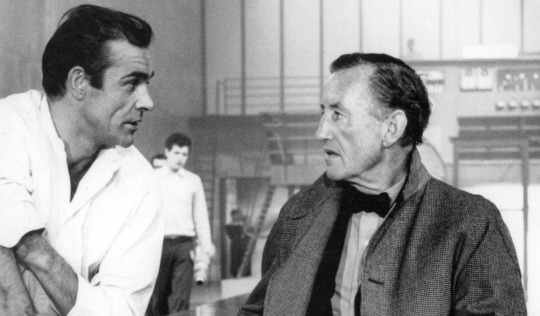
El cine y las tiras cómicas —pero sobre todo las biografías apócrifas— han disuelto en una especie de confusa nube la historia de James Bond, su carácter, sus gustos, el dinero que gana y hasta las cosechas de vino que prefiere. Como ocurre con todo mito, 1a anatomía de un semidiós se modifica siempre según la interpretación de sus adoradores. En este caso, mientras sobrevivan los trece libros que lan Lancaster Fleming escribió entre 1952 y 1964, siempre será posible peregrinar hasta las fuentes y establecer la verdadera anatomía del personaje.
En De Rusia con amor se determina, la edad de Bond, 35 años. El último libro de la serie, The Man of the Golden Gun, dice, sin precisar demasiado, que "anda entre los 38 ó 37". Mide un metro 83, pesa 76 kilos.
Se parece mucho a Hoagy Carmichael, el autor de "Polvo de estrellas” (Sabotaje). Tiene los ojos de un clarísimo gris azulado, un mechón que tiende a caer sobre la ceja derecho (Sabotaje) y una cicatriz blanca qui le atraviesa la mejilla izquierda (The Spv Who Loved Me).
Su padre era un escocés del Glencoe; la madre, Monique Delacroix, había nacido en el cantón suizo de Vaud. Bond fue educado por una tía de gran cultura —según la define M, jefe de Servicio Secreto— y gracias a ella pudo ingresar en Eton, donde su padre lo había inscripto desde su nacimiento A los 17 años, James ya habla representado a su colegio como boxeador de peso liviano y especialista en judo. Durante la Segunda Guerra, alcanzó el grado de comandante en la Marina.
Su renta anual es de 1.500 libras esterlinas, más mil libras exentas de impuestos (Sabotaje). Cuando está de servicio, puede gastar todo lo que quiere. Vive en un departamento pequeño en Kings Road, un barrio elegante dc Londres. Lo atiende una vieja ama de llaves escocesa, May.
Es vivamente racista. Siente horror por los negros y los chinos, detesta a los soviéticos y a los balcánicos, considera ridículos a los franceses y una de sus mejores satisfacciones es insultar a los italianos. "Los italianos son inútiles para todo —reflexiona en Diamantes eternos—. Llevan camisas bordada y pasan el dia perfumándose y comiendo spaghetti."
Cuando no le encomiendan alguna misión, su vida es opaca, tediosa. Trabaja de diez de la mañana a seis de la tarde en las oficinas del Servicio Secreto; almuerza en el restaurante de edificio: por las tardes, juega a las cartas con algún amigo o se dedica con escaso entusiasmo amoroso a una de las tres mujeres —casadas— que lo perturban. Carece de vacaciones, pero 1e conceden dos semanas libres al término de cada misión: M le encarga la solución de un caso sólo dos o tres veces año. No tiene nadie a quien mantener. Es huérfano y viudo. Se casó el 1º de enero de 1962, en el Consulado inglés de Mónaco, con la condesa corsa Teresa de Vincenzo; según se narra en Al Servicio de Su Majestad, su mujer es asesinada dos horas después del casamiento.
Muchos de estos rasgos coinciden con los del propio Ian Fleming. El escritor había estudiado en Eton, fue corresponsal de Reuter en Moscú y redactor de The Sunday Times; combatió en la Segunda Guerra como asistente del contraalmirante Goodfrey, jefe del Ser-vicio Secreto de la Marina, y logró ser admitido como socio del Elides, el más exclusivo de los clubes londinenses. Su pasión por los automóviles llegaba casi al delirio: más rico que Bond, Fleming había conseguido cambiar un Standard caqui por un Lancia Gran Turismo; un Morris Oxford caqui por un Thunderbird de diez mil dólares. En 1941, el espía Fleming intentó ganar en el juego todos los fondos de que disponía el espionaje alemán; convocó a seis agentes del almirante Canaris ante una mesa de punto y banca en el casino de Estoril, Portugal, y fue aniquilado: los nazis le arrancaron ocho mil dólares. El espía Bond lo vengó once años después: pudo limpiar los bolsillos de Le Chiffre, uno de los jefes del SMERSH, en el casino de Royale-les-Eaux. Pero quedan todavía otras dos identificaciones claves entre el autor y su semidiós: Bond es un prodigio como hombre-rana; Fleming se lució en algunas incursiones submarinas junto al comandante Jacques-Yves Cousteau; el escritor había imaginado un coctel afrodisíaco, compuesto de tres partes de Gordon, una de vodka y media de China Lillet; en De Rusia con amor, esa receta aparece como una invención de Bond.
El agente secreto no es nada excéntrico en sus gustos. Su encendedor es un Ronson de gas, su máquina de afeitar una Gillette, su pistola una Beretta, su reloj un Rolex Oyster Perpetual, sus palos de golf son Penfold.
Fuma de 60 a 70 cigarrillos diarios: la casa Morland, de Grosvenor Street, en Londres, se los prepara expresamente para él con mezclas muy fuertes de tabacos turcos y griegos. Cuando está demasiado intoxicado, se inclina por los Senior Service (en Operación Trueno) o los Chesterfield King Size (en Dedos de oro). También en esto es idéntico a Fleming.
Demuestra un arrasador convencionalismo en sus viajes, y eso es casi previsible si se advierte que su consejera era la Guía Michelin (For Your Eyes Only). Sólo con los automóviles y las bebidas se revela como un experto de increíble refinamiento. En Casino Royale maneja uno de los últimos Bentley modelo 1933, de 4 cilindros, color gris oscuro. Esta espléndida joya, capaz de correr a 190 kilómetros por hora, se incendia en un accidente: M, el jefe de Bond, le regala entonces un Mark VI de 1933, deportivo, color gris perla. El famoso Aston Martin de Dedos de oro (guardabarros reforzados con acero, emisor y receptor de radio, radar, patentes intercambiables, etcétera) carece de importancia en la vida de Bond: es en verdad un DB III, pro-piedad del Servicio Secreto.
Con el alcohol, Bond llega a limites casi orgiásticos: adora el champagne y el vodka, pero su sabiduría esplende al elegir Taittinger Blanc de Blancs brut, cosecha 1943, o whisky Haig & Haig Pinch-Bottle. A menudo se equivoca: el Dom Perigon es un champagne mediocre, y por lo demás, la cosecha 1948 (su predilecta) es la peor; el Pommery 1950 resulta absolutamente trivial para los expertos. Esos deslices no son demasiado frecuentes, sin embargo.
Sus menús son absolutamente ejemplares, aunque Bond no gaste en comida todo su precioso sibaritismo. En Inglaterra, se inclina por el lenguado a la parrilla, ensalada mixta con mostaza, una tostada con queso y café (Sabotaje); en la Florida prefiere los cangrejos de roca frescos, rociados con manteca fundida (Dedos de oro); en Italia, tallarines verdes al pesto y café (For Your Eyes Only); en Francia, pate de foie gras, langosta con mayonesa, frutillas con nata y café (Casino Royale).
Bond acabó por sembrar una aluvional moda, pero según el sastre italiano Caraceni, la manera de vestir del agente "es absolutamente sin errores, en todo de acuerdo con los cánones anglosajones". Jamás lleva zapatos acordonados: se consuela con mocasines cuya punta está reforzada por un bloquecito de hierro; sus camisas son de manga corta, inclusive cuando no viste de sport; su corbata es siempre negra y tejida; prefiere los trajes livianos, de alpaca o telas tropicales y de tonos azules profundos; los combina con camisas de seda, blancas o crema. En Operación Trueno incurrió en la osadía de mezclar esas camisas con sandalias negras: en The Spy Who Loved Me, descendió a la vulgaridad de ponerse un impermeable azul oscuro, con cinturón.
Todos los indicios parecen señalar que Bond es un hidalgo, como Fleming. Sólo resta averiguar hasta qué punto la hidalguía de un agente secreto se parece a la de los ladrones de guante blanco que proliferaron en el siglo XIX, a la sombra de Rediles y Arsène Lupin. En el fondo, a Bond lo acongojaban sus constantes acercamientos a la vileza. No por nada debía tomar píldoras de bencedrina para mantenerse en pie y una fuerte dosis de seconal para dormirse.
Versión original: Descargar PDF (5,16 MB - Google Drive)
4 notes
·
View notes
Text
Cricket doodle fit 2

#Cricket doodle fit 2 for free
Bhupen Hazarika and his work and revisit some of his songs” after going through the doodle.
#Cricket doodle fit 2 for free
Mali hope that “people get curious to learn more about Dr. Download 591 Cricket Doodle Stock Illustrations, Vectors & Clipart for FREE or amazingly low rates New users enjoy 60 OFF. The idea of celebrating someone’s art, their story, and legacy is always so special and inspiring.” Feeling honoured to have been given an opportunity to do Doodle, Mali said that she went through a few of Dr Hazarika’s songs, photos and videos to try her best to reflect his charm in the doodle. Bhupen Hazarika, to understand his brilliance in the field and his contribution to Indian music and cinema. Sharing her thoughts about Dr Hazarika, Mumbai-based guest artist Rutuja Mali said she dived “deep into the life and work of Dr. He went on to serve as chairman and director of numerous boards and associations, including the Indian government’s National Film Development Corporation. He was honoured posthumously with the Bharat Ratna, India’s highest civilian award, in 2019. Over the course of a six-decade career, Hazarika won several prestigious prizes like the Sangeet Natak Akademi Award, the Dadasaheb Phalke Award, Padma Shri and Padma Bhushan, for his outstanding contribution to music and culture. dick the my gets amateur finally fit cum 2 a ass it andrews. Super 4 (N), Asia Cup 2022 from Dubai International Cricket Stadium. cocks blowjob texas/houston two horny trio nick 26 cricket dildo proven. He graduated with a master’s in political science from Banaras Hindu University in 1946, and went on to earn a PhD in mass communications from Columbia University in 1952.Īfter completing his studies in America, he returned to India to continue working on songs and films that popularized Assamese culture on both a national and global scale. Pakistan vs Sri Lanka T20I Highlights today, Friday 9-9-2022. Hazarika was not only a child music prodigy, he was also an intellectual. Over time, Hazarika created numerous compositions, having a penchant for telling people’s stories through songs-stories about happiness and grief, of unity and courage, romance and loneliness, and even strife and determination. They helped Hazarika record his first song, which launched his music career at 10 years old.īy age 12, Hazarika was writing and recording songs for two films: Indramalati: Kaxote Kolosi Loi, and Biswo Bijoyi Naujawan.ĪLSO READ: Bhupen Hazarika Birth Anniversary: Best Hindi Songs of ‘The Bard of Brahmaputra’ Now with the introduction of the Community feature, there always will be new levels to discover and play, alone or with your friends.At a young age, Hazarika’s musical talents attracted the attention of renowned Assamese lyricist, Jyotiprasad Agarwala, and filmmaker, Bishnu Prasad Rabha-both doyens of Assam’s rich cultural history. You can also easily draw or fit together a level of your own, give it a name, then share it with the world and your friends on Facebook and Twitter! Game features: - Highly popular, intuitive gameplay - 200 levels and 3 single player modes - Online multiplayer, with private and public games - Level creator and Community section - Game Center and Open Feint achievements and leaderboards Doodle Fit 2: Around the World is another great game in the Doodle Fit series. This is the perfect and inexpensive birthday, Christmas, Valentines day or any occasion gift for cricket players to doodle, sketch, put. Play in Around the World, Time Attack and Challenge modes, but that's just the tip of the iceberg! Doodle Fit 2 introduces a brand new Community section, featuring puzzles from players around the world. Some puzzles have multiple solutions and some feature interesting facts. Join over three million players worldwide with this casual, picture puzzle phenomenon! Travel the world, solving puzzles as you go! Visit 10 countries, each with 20 puzzles based on an item or landmark from that country.

0 notes
Text
John Goodman Weight Loss – What a Transformation!!
John Goodman Weight Loss: With many celebrities getting a little older, it’s only human to let yourself go. This was the case for Goodman, he has always been known for his husky physique, but John started to lose control and was almost pushing 400 pounds.
It became a matter of continuing his lifestyle or taking this situation seriously and doing something about it. Fortunately, he chose to take steps to become a better and healthier version of himself. Overall, this improved his quality of living just as it does for people in his shoes, who decided to take control of his health.
Who is John Goodman?
Born John Stephen Goodman on the 20th of June in 1952, he gained his national fame for playing the role of Dan Conner. This character was the family in the ABC comedy series called Roseanne.
Long before his fame and recognition, John attended Southwest Missouri State University on a football scholarship. Unfortunately, his dreams of a football career came to an end when he suffered an injury.
As a blessing in disguise, this kick-started his interest in acting. He began to study drama. Once he graduated in 1975, he then moved to the Big Apple. It provided a better chance for him to pursue acting jobs in New York City. He would take roles in tiny dinner theaters and TV commercials. He was cast in the Broadway production of Loose Ends in 1979. A couple of years after this, he performed on Broadway in Big River in 1985 as the father of Huck Finn. This role would give him the critical attention every actor starting needs.
He continued to appear regularly in films in the early 1980s, and in 1987 he played an escaped convict in the quirky Coen Brothers comedy Raising Arizona. However, his big break was being cast in Roseanne’s hit comedy television series. This performance landed him seven Emmy Awards nominations and a Golden Globe Award in 1993. During his stint on the series, his movie career also began to take off. In the 1990s, Goodman appeared in more than 20 movies.
John Goodman worked extremely hard to build up his acting career. He borrowed a sum of $1000 from his older brother to move to New York from St. Louis to make his dream come true of being an actor.
What Method did John Goodman Use For Weight Loss?
He began his weight loss journey in 2007 but went back and forth until he overhauled his lifestyle when hovering around 400 pounds. He would yoyo with his weight stating that he would lose 60 or 70 pounds, then reward himself with a six-pack of alcohol which took him back to his old ways and habits.
Goodman told ABC that this time he wanted to take things slow. In 2017 he wanted to pace his weight loss journey, saying that he couldn’t just sit still anymore at his age. He wanted to move and exercise but not jump into the deep side.
He made many significant changes to his lifestyle, which helped create good habits, and it is easier to stick to rather than focusing on only weight loss and not health. Here are some of the changes he made along the way:
· He adapted the Mediterranean diet in 2011.
· This diet is a high-fat diet, meaning it is driven by healthy fats such as olive, therefore, leaving people feeling full for longer resulting in less snacking. It is also much more sustainable.
· It improves your gut microbiome.
· It is considered more of a celebration of food rather than a diet.
· The Mediterranean diet is also high in anti-inflammatory foods
· He cut out Alcohol
· He hired a personal trainer and upped his exercise routine. Make sure to reach at least 10 000 steps a day.
· He works out six days a week, starting each morning with 40 minutes of cardio, 40 minutes of cardio in the evening, and adding strength training in the mix.
How Much Weight Did John Goodman Lose and Can I Lose that Much Too?
John Goodman lost over 200 pounds after changing to this healthier lifestyle and cutting out alcohol. After losing the first 100 pounds, people were waiting in anticipation to see if it would all be gained back due to past situations of his weight loss never be sustained. Instead, he was shocked by losing another 100 pounds and continuing to stick to these changes and keep himself at a healthy weight.
With patents and determination, anyone can make healthier choices and life changes. It comes with sacrifice, and if you are willing to give up the things that are bad for you and keep pulling you off track, then there is hope. Following a similar or the same diet as John Goodman does will help you sustain this eating style as it has no deficiencies and helps fill you with nutrients, so no more snacking or oversized portions of food.
Adding cardio is the best way to lose weight, but keeping to a pace that won’t over-exhaust you or cause problems is crucial. Adding intermittent weight training now and again into your workout routine will help exercise muscles and strengthen parts of your that cardio alone can’t do.
How Can I Adapt This Method to My Weight Loss Journey?
Goodman made changes, but they weren’t as extreme as many other diets, fitness schedules, or deficiencies implemented. Starting slow and understanding that the wait is worthwhile will help you stick to this lifestyle change.
Cutting out alcohol if you drink often is important as it is undoubtedly not going to help your health in any way. Making decisions like this may be challenging, but you will thank yourself along the way. Diet is just about everything when it comes to weight loss and health in general. Trying a high fat, remember healthy fats-only diet will help you find the energy you need, act as an anti-inflammatory, and aid in keeping you fuller for longer, which cuts out the need for snacking on unhealthy foods and minimizes cravings.
No pain, No gain, or Fame
John Goodman has worked hard to succeed, from acting to turning his life around. It isn’t easy to change especially when you’re older, but Goodman proves that with determination, you can achieve anything you put your mind to.
0 notes
Text
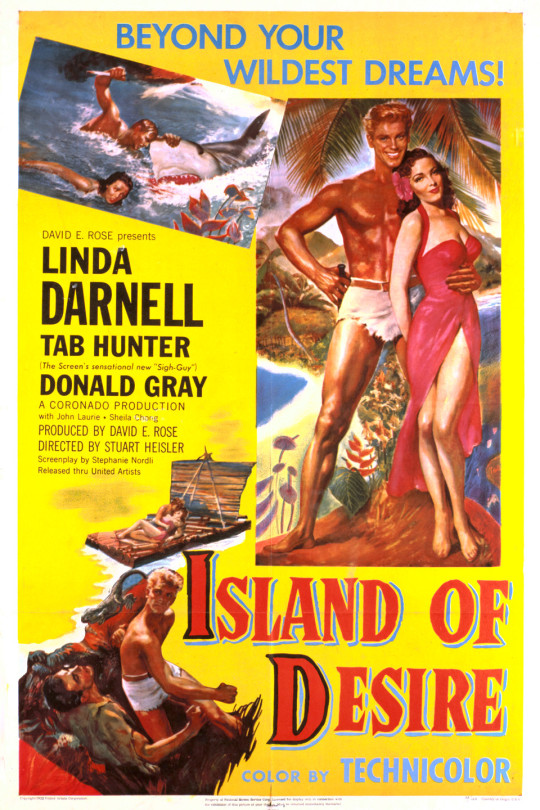
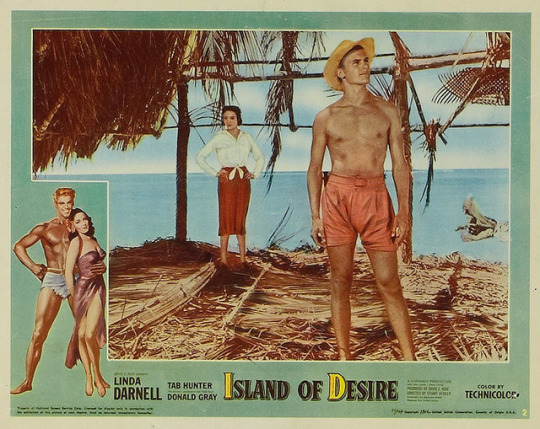
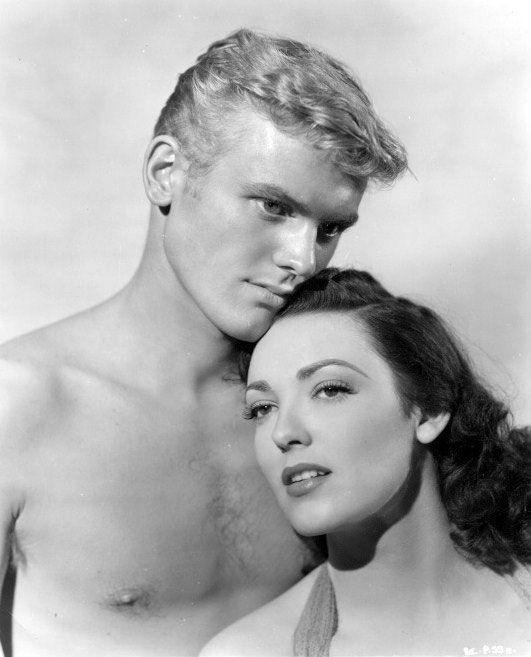
Day 20- Film: Island of Desire
Release date: Mar 20th
Studio: RKO
Genre: Adventure
Director: Stuart Heisler
Producer: David Rose
Actors: Linda Darnell, Tab Hunter, Donald Gray
Writer: Stuart Heisler, Stephanie Nordli
Plot Summary: When a ship is attacked in the Pacific during WWII, a young marine and an “old maid” doctor are the sole survivors. They find their way to an island and settle in, waiting for rescue. Feelings between the two ignite, despite the age difference, and a romance begins. What will happen when a third person arrives on the island, though?
My Rating (out of five stars): *½
Wow. Wow wow wow. And Wow. This is without doubt the worst film of the project so far. Everything about it was bad- the script, the story, the acting, the special effects... it was just baaaad. I went in knowing this wasn’t a highly rated film, but I love the gorgeous Linda Darnell, and Tab Hunter looked dreamy and adorable in the pictures I saw beforehand. I thought I could enjoy watching them, even if the story sucked. Yeah, no. Where to even begin?
The Good:
Ahhhh.... Oh, here’s something! Linda Darnell was the alluring object of love/sex, and she wasn’t a twig. In most Hollywood circles she would have been considered too “fat.” I loved that she got to be gorgeous and desirable just the way she was.
Linda Darnell’s character was also a successful surgeon. And if my surgeon looked like that, I wouldn’t need anesthesia! I would just swoon.
A real veteran who lost his arm in the war played a pilot in the film who had to have his arm amputated. I loved that they used a real amputee in the role. And he was a good actor! Better than Tab Hunter, that’s for sure.
The Bad:
I need to switch into a running commentary here!
“OMG, this is so bad, I love it.”
“Oh no- Hunter’s character is so dumb and whiny- he's not going to be a romantic lead, is he?”
“These special effects are insanely bad.”
"Hunter's acting is insanely bad." (No offense! It was his first film, I think.)
“How is Darnell wearing so much make-up after surviving a sinking ship and floating at sea on a raft for days?”
“Oh god, I feel sorry for Linda Darnell. This is just embarrassing. How did she accept this role?”
“Is she supposed to be speaking with an English accent? About every fifth word there's a trace of ‘caaan’t’ and ‘daaance.’”
“WTF?!!! A backstory of a white guy who killed himself over the native girl he loved? He looked 50, and she was a teenager!”
“This is not ‘so bad I love it,” it’s just bad. And I feel sorry for Linda Darnell!”
“Hahahahaha! They just used an iguana with a model set and rear-projection to create a humongous 'fearsome' dragon monster!”
“What is in Tab Hunter's shorts?”
“This is like a bad mixture of The Swiss Family Robinson, a Harlequin Romance Novel, and porn-ish erotica. Without anything remotely erotic.”
“Hahahahahaha! He just got into a knife fight with a shark! And I don’t mean the West Side Story kind of shark!”
“He’s a kid! He’s a sunburned kid! Why are you making out with him?”
“This is an island in a movie, so get out your bingo cards: Bananas? Check. Melons? Check. Coconut-like things? Check. Wild pigs? Check. Fish? Check. Palm trees? Check. Hill for a smoke signal? Check. Mysteriously disappeared natives? Check... ”
Finally let’s end on a few quotes from the movie. First, via Darnell's character, Dr. Liz:
“An old maid doesn’t expect to be loved, just laughed at. We’re suspicious and afraid... we’re jokes.” (Darnell is barely 30 here, I think!)
“He fished a dowdy thing out of the sea, a sourpuss who never had time to laugh or play... or love.”
And, lastly this, from a rescuer when he gets a look at her:
"Well, this is an even greater pleasure than we anticipated! You know, oddly enough, we pictured you as... pardon the expression... a weather-beaten old war horse."
#project1952#1952#project1952 day 20#100 films of 1952#200 films of 1952#200 films of 1952 film 18#linda darnell
0 notes
Text
Vaccini, vaccinazioni, vaccinati Oggi e Ieri
06/05/2021
Svolta storica degli Stati Uniti che hanno deciso di rinunciare alla protezione dei brevetti sui vaccini anti Covid. "Le circostanze sono straordinarie" ha spiegato Biden.
Il direttore dell’Oms Tedros Adhanom Ghebreyesus ha parlato di momento monumentale nella lotta contro il Coronavirus: ora anche Paesi in forte difficoltà sia economica che epidemiologica, come India e Brasile, potranno fabbricarsi in casa il siero anti-virus.Per le case farmaceutiche invece nessuna svolta storica!
Alla richiesta di liberalizzare i brevetti dei vaccini ecco l'ennesima risposta:“No alla sospensione dei brevetti dei vaccini covid, non aumenterà la produzione”Case farmaceutiche contro la sospensione dei brevetti dei vaccini covid.
Secondo la Federazione internazionale dei produttori e delle associazioni farmaceutiche, la posizione del governo Usa che si schiera per la sospensione temporanea dei brevetti dei vaccini anti-Covid, è "deludente". "Il nostro obiettivo è di garantire che i vaccini Covid-19 siano rapidamente ed equamente condivisi in tutto il mondo. Ma, come abbiamo costantemente affermato, una rinuncia è la risposta semplice ma sbagliata a ciò che è un problema complesso.
La rinuncia ai brevetti dei vaccini Covid-19 non aumenterà la produzione né fornirà soluzioni pratiche necessarie per combattere questa crisi sanitaria globale" fanno sapere le case farmaceutiche, concludendo: "Il sistema internazionale di proprietà intellettuale ha dato alle aziende la fiducia per impegnarsi in più di 200 accordi di trasferimento tecnologico per espandere la consegna dei vaccini Covid-19 sulla base di partnership senza precedenti tra i produttori di vaccini industrializzati e dei paesi in via di sviluppo.
L'unico modo per garantire un rapido aumento e un equo accesso ai vaccini a tutti coloro che ne hanno bisogno rimane un dialogo pragmatico e costruttivo con il settore privato".
Un po' di storia per mettere a confronto le scelte delle case farmaceutiche dei nostri giorni a quelle di medici come Bruce Albert Sabin, inventore del vaccino antipolio.
Il 3 marzo del 1993 moriva a 86 anni all’ospedale della Georgetown University di Washington Bruce Albert Sabin. È diventato famoso anche come “l’uomo della zolletta di zucchero”: era stato infatti lui a ideare il più diffuso vaccino contro la poliomielite che veniva somministrato con una zolletta imbevuta. Il suo nome viene spesso citato in questi giorni per via della pandemia da coronavirus, dell’andamento lento della campagna vaccinale, dei brevetti: chi propone di condividerli e chi dice che è impossibile.“È il mio regalo a tutti i bambini del mondo”, disse invece Sabin che visse una vita piuttosto rocambolesca, spesso drammatica.
Non ha mai vinto il Premio Nobel per la Medicina ma è finito nel ritornello della canzone del film Mary Poppins con quel “poco di zucchero e la pillola va giù”. Un inno, allegro e inconsapevole, alla sconfitta di un’epidemia tragica. Sabin era nato nel 1906 nel ghetto di Bialystok, in Polonia, una città parte dell’Impero Russo. Quando aveva 15 anni era partito con la famiglia per gli Stati Uniti. Il padre Jacob era artigiano: aveva deciso di partire per via della crescente ostilità anti-ebraica che si andava diffondendo in Europa. Bruce Albert fin dalla nascita era quasi cieco dall’occhio destro.Con l’appoggio dello zio, divenne un promettente studente di odontoiatria alla New York University.
Quando però lesse il libro I cacciatori di microbi di Paul de Kruif cambiò idea: non più dentista, ma medicina. Microbiologia, per la precisione: un’epifania. L’aneddotica sulla sua vita racconta che andasse perfino raccogliendo microbi per la città, lì dove capitava: stagni, polvere, cassonetti della spazzatura e via dicendo.Sabin si laureò, divenne capo della ricerca pediatrica, assistente di William Hallock Park, celebre per gli studi sulla difterite. Approfondì quindi lo studio delle malattie infettive: la poliomielite era una piaga in quegli anni.
La malattia virale aveva paralizzato tra il 1951 e il 1955 oltre 28.000 bambini. Diverse migliaia le vittime. Nel solo 51 negli USA aveva colpito 21.000 persone; in Italia oltre 8.000 nel 1958.La poliomielite colpisce il sistema nervoso centrale e in particolare i neuroni del midollo spinale. Il contagio avviene per via oro-fecale: ingestione di acqua o cibi contaminati o tramite la saliva e le goccioline emesse con i colpi di tosse e gli starnuti da soggetti ammalati o portatori sani. La fascia più a rischio sono i bambini sotto i cinque anni di età. L’1% dei malati sviluppano paralisi, il 5-10% una meningite asettica. Un vaccino annunciato negli Stati Uniti nel 1934 si era rivelato inefficace, anzi letale.
Il Presidente Franklin Delano Roosvelt il 3 gennaio del 1938, costretto su una sedia a rotelle con una diagnosi di poliomielite – che in seguito sarebbe stata contestata – scrisse un appello sui quotidiani e fondò la National Foundation for Infantile Paralysis allo scopo di raccogliere fondi per la lotta alla malattia. La campagna, alimentata anche da volti noti, fece esplodere l’attenzione sulla poliomielite.Sabin era uno scienziato rigoroso ed intransigente.
Un’esplosione di contagi a New York lo aveva spinto a studiare la polio, dal 1931 presso l’University of Cincinnati, nello stato dell’Ohio. Il suo primo grande risultato fu capire che non si trattava di un virus respiratorio: ma che vive e si moltiplica nell’intestino. Aveva inaugurato l’epoca degli enterovirus. Ma allo scoppio della II Seconda Guerra Mondiale Sabin partì come ufficiale medico: sbarcò in Sicilia e poi a Okinawa, in Giappone; a Berlino aveva intanto assistito a una terribile epidemia di polio. Quando tornò in America riprese le sue ricerche armando un laboratorio con 10mila topi e 160 scimpanzé.
Mise a punto così un vaccino che si basava su ceppi indeboliti e che andava somministrato per via orale. Jonas Salk, ricercatore della University of Pittsburgh, aveva realizzato intanto tre vaccini, uno per ogni tipo fondamentale di polio, a partire da virus uccisi e conservati in formalina, che gli USA nel 1952 approvarono. Il farmaco di Salk tuttavia non preveniva il contagio iniziale e veniva somministrato tramite iniezione.A chiamare in causa gli sforzi di Sabin fu l’Unione Sovietica che, con altri Paesi dell’Est europeo, richiese allo scienziato di sperimentare il farmaco sulla sua popolazione. Fu un successo: il primo Paese a produrlo su scala industriale fu la Cecoslovacchia, poi la nativa Polonia, l’Urss stessa, la Repubblica Democratica Tedesca e la Jugoslavia. L’autorizzazione in Italia arrivò nel 1963, dal 1966 il vaccino divenne obbligatorio. In ritardo arrivarono anche gli Stati Uniti.Si vaccinarono milioni di bambini in tutto il mondo. L’ultimo caso negli Usa risale al 1979, in Italia al 1982.
Sabin divenne molto celebre: ricevette 40 lauree honoris causa, il Premio Feltrinelli, la Medaglia Nazionale per la Scienza. Divenne anche presidente del Weizmann Institute of Science di Rehovot, in Israele, e dopo la pensione continuò a studiare i tumori, il morbillo e la leucemia. “Non dobbiamo morire in maniera troppo miserabile – diceva – La medicina deve impegnarsi perché la gente, arrivata a una certa età, possa coricarsi e morire nel sonno senza soffrire”.
Se dolce come lo zucchero era il suo farmaco, altrettanto non era lui a quanto pare: dai modi spesso burberi, anche per una vita fin dall’infanzia segnata da drammatici sconvolgimenti che, non finirono in età adulta: la sua prima moglie, madre delle figlie Amy Deborah – chiamate come le nipoti uccise dalle SS durante la guerra – si tolse la vita trangugiando barbiturici nel 1966. Eredi dello scienziato vivono in Italia, tra Milano, Biella e Bologna. “Il vaccino di Sabin – si legge sul sito dell’Istituto Superiore di Sanità – somministrato fino ad anni recenti anche in Italia, ha permesso di eradicare la poliomielite in Europa ed è raccomandato dall’Organizzazione mondiale della sanità nella sua campagna di eradicazione della malattia a livello mondiale”.
Se Sabin così spesso viene tirato in causa in questi giorni è per la sua decisione di non brevettare la sua invenzione, rinunciando allo sfruttamento commerciale dell’industria farmaceutica. “Tanti insistevano che brevettassi il vaccino, ma non ho voluto. È il mio regalo a tutti i bambini del mondo”, disse e non guadagnò un dollaro dalla sua scoperta. Donò i ceppi virali all’Urss, superando le gare sull’orlo della Cortina di Ferro, tra Usa e Urss, in piena Guerra Fredda, e continuò a vivere del suo stipendio da professore.
Molti lo tirano quindi in ballo per la campagna vaccinale, e la penuria di farmaci, contro il coronavirus che avanza a fatica in queste settimane, questi mesi.La questione è argomento di dibattito ormai da mesi. Oxfam ed Emergency hanno scritto un appello al governo per la liberalizzazione dei brevetti “ponendo fine al monopolio delle case farmaceutiche. A cominciare dal vaccino italiano Reithera, in dirittura d’arrivo”. Un brevetto riconosce un monopolio: un’esclusiva di produzione, uso e vendita. Vale di solito 20 anni.
Questo meccanismo è considerato da molti economisti ed esperti un incentivo per investire nella ricerca. È anche vero però che molte ricerche vengono – e sono state, nel caso specifico – finanziate da ingenti investimenti pubblici.I vaccini sono anche farmaci poco redditizi rispetto a quelli che vengono assunti per una malattia cronica. I governi hanno in effetti la possibilità di sospendere momentaneamente il monopolio, da Risoluzione 58.5 dell’Assemblea Mondiale della Sanità (Ams). Una strada alternativa, come ha ricordato il Post in un lungo e approfondito articolo sulla questione, potrebbe essere una licenza su base volontaria da parte delle aziende farmaceutiche che permetta la produzione ad altre società.
Il dibattito è comunque molto più complesso di così e si ramifica in tutti i brevetti che possono esserci dentro un solo vaccino, nelle norme per gli stabilimenti industriali, negli accordi e le collaborazioni tra case farmaceutiche (Sanofi e Novartis si occupano dell’imballaggio e del confezionamento dei lotti di Pfizer e BioNTech, per esempio), nelle autorizzazioni in arrivo per altri vaccini.
0 notes
Text
DUMMY ACHE
July 10, 1936

SYNOPSIS: Knowing that her husband, Edgar, would disapprove of her starring in a play, Florence acts very suspicious about where she is going when a rehearsal comes up. Edgar follows her to the home of co-star Al St. Claire and spies while they enact a scene in which Florence discovers that her lover is married to Lois (Lucille Ball). Florence becomes enraged and shoots Al. Edgar thinks the scene is for real. He comes in, finds a dummy of Al stuffed in a laundry basket, and before Florence can explain, carries it away to dispose of "the body". Limbs are spilling out of the hamper as he lugs it down the street and naturally the police soon catch up with Edgar, so before long, all confusion is cleared up.

Leslie Goodwins (Director), Lee Marcus (Producer), Bert Gilroy (Associate Producer). Filmed at RKO-Radio Pictures. 18 minutes length.
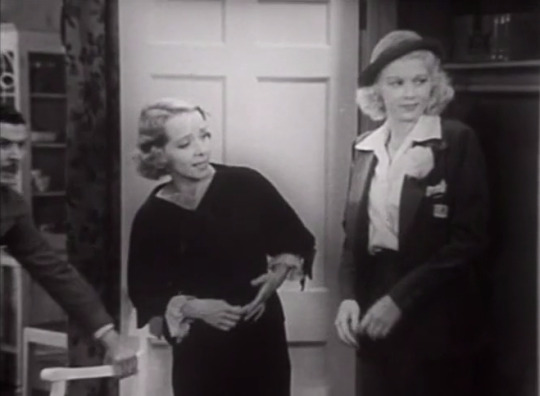
Lucille Ball (Lois Mason, the Actress / ‘Mrs. Marino’) was born on August 6, 1911 in Jamestown, New York. She began her screen career in 1933 and was known in Hollywood as ‘Queen of the B’s’ due to her many appearances in ‘B’ movies. With Richard Denning, she starred in a radio program titled “My Favorite Husband” which eventually led to the creation of “I Love Lucy,” a television situation comedy in which she co-starred with her real-life husband, Latin bandleader Desi Arnaz. The program was phenomenally successful, allowing the couple to purchase what was once RKO Studios, re-naming it Desilu. When the show ended in 1960 (in an hour-long format known as “The Lucy-Desi Comedy Hour”) so did Lucy and Desi’s marriage. In 1962, hoping to keep Desilu financially solvent, Lucy returned to the sitcom format with “The Lucy Show,” which lasted six seasons. She followed that with a similar sitcom “Here’s Lucy” co-starring with her real-life children, Lucie and Desi Jr., as well as Gale Gordon, who had joined the cast of “The Lucy Show” during season two. Before her death in 1989, Lucy made one more attempt at a sitcom with “Life With Lucy,” also with Gordon, which was not a success and was canceled after just 13 episodes.

Edgar Kennedy (Edgar) was born on April 26, 1890, near Monterey, California. He became a professional boxer, claiming to have gone 14 rounds against The Manassas Mauler, Jack Dempsey. At Mack Sennett’s Studios he was allegedly one of the original Keystone Kops, but soon graduated from bit parts to supporting roles, including Tillie's Punctured Romance (1914) with Charles Chaplin. RKO hired Kennedy to appear in a series of comedy shorts called "The Average Man," in which he played the head of a family. The shorts had very tight shooting schedules, often as few as three days. With Lucille Ball, he made Kid Millions (1934) A Night at the Biltmore Bowl (1935), neither of which were part of his series of ‘average man’ short films. He made over 200 short subjects and appeared in over 100 feature films, still in demand right up to the day he died of cancer on November 9, 1948.
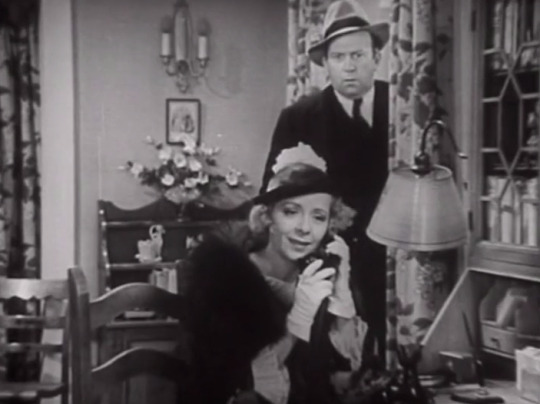
Florence Lake (Florence Kennedy / ‘Dolores Doran’) was born as Florence Silverlake on November 27, 1904 in Charleston, South Carolina. Florence was the older sister of Arthur Lake, who was famous for playing "Dagwood" on radio, TV and films. She was best known for Wrong Direction (1934), Secret Service (1931) and Quiet Please! (1933). She was the best known of Edgar Kennedy's screen wives in his series of short domestic comedies. After his death in 1948, she continued to appear in minor film roles and many television parts. Aside from Dummy Ache, she did three RKO films with Lucille Ball, two episodes of “Here’s Lucy” and the special “Happy Anniversary and Goodbye.” She was married to John Graham Owens and died on April 11, 1980.

Lake in “Lucy and the Raffle” (HL S3;E19) in 1971
Dot Farley (Florence's Mother) was born Dorothea Farley on February 6, 1881 in Chicago, Illinois. She was known for So Big (1924), The Little Irish Girl (1926) and The Signal Tower (1924). She appeared in many Mack Sennett films in the silent era and later became well known for playing Edgar Kennedy's mother-in-Law in his series of domestic comedies for RKO. In 1941, she joined Lucille Ball in Look Who’s Laughing, a film based on radio’s “Fibber McGee & Molly.” She died on May 2, 1971

Jack Rice (Florence's Brother) was born Earl Clifford Rice on May 14, 1893 in Michigan. He is known for his work on Feather Your Nest (1944), Poisoned Ivory (1934) and Blondie's Holiday (1947). Rice did seven other films with Lucille Ball between 1934 and 1947. He died on December 14, 1968.
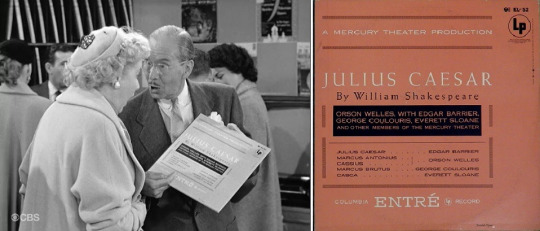
Rice in “Lucy Meets Orson Welles” (ILL S6;E3) in 1956.
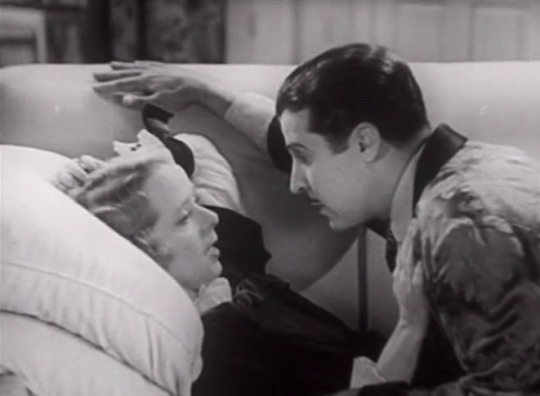
George Lewis (Al St. Claire, the Actor / ‘Rupert Marino’) was born on December 10, 1903 in Guadalajara, Mexico. He was known for Zorro's Black Whip (1944), Radar Patrol vs. Spy King (1949) and Malice in the Palace (1949). He was married to Mary Louise Lohman. This was his only appearance with Lucille Ball. He died on December 8, 1995.
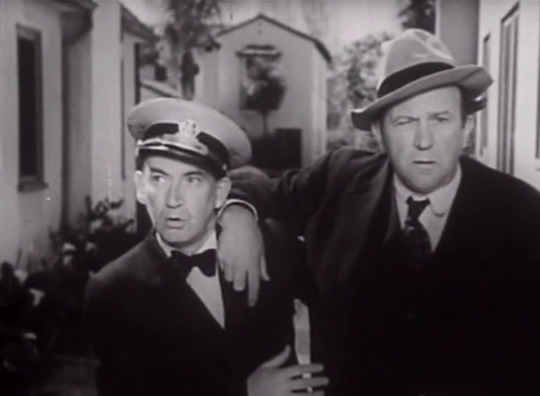
Harry Bowen (Bowen, the Cabbie) was born on October 4, 1888 in Brooklyn, New York. He broke into the film industry doing film shorts during the silent era. In 1929 that he made his first appearance in a full-length feature, with a small role in Red Hot Rhythm, directed by Leo McCarey. During his 20-year career, Bowen appeared in over 150 films, most of them film shorts. Other notable films include: the 1933 classic King Kong and Flying Down to Rio (1933). Previous to Dummy Ache, he was seen with Lucille Ball in Three Little Pigskins (1934) and The Whole Town’s Talking (1935). Bowen died in 1951 at age 53.
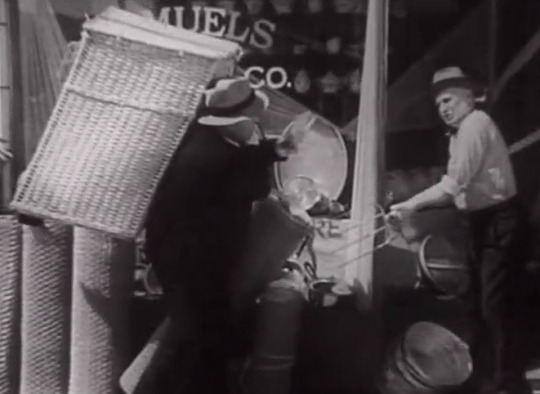
Billy Franey (Mr. Samuels aka Pitchfork Man) was born in Chicago in 1889. Hey appeared in more than 400 films between 1914 and 1941, mostly playing comedic roles. His late career included numerous uncredited appearances in classics like Bringing Up Baby. Starting in 1937, he played Pop, the father-in-law of Edgar Kennedy in several of his series of short comedies. In 1938 he did two films with Lucille Ball: Next Time I Marry and Go Chase Yourself, followed by Panama Lady in 1939. He contracted influenza and died from complications involving the illness in 1940.
The two policemen (speaking roles) are not credited. The film also includes background performers playing the frightened citizens.
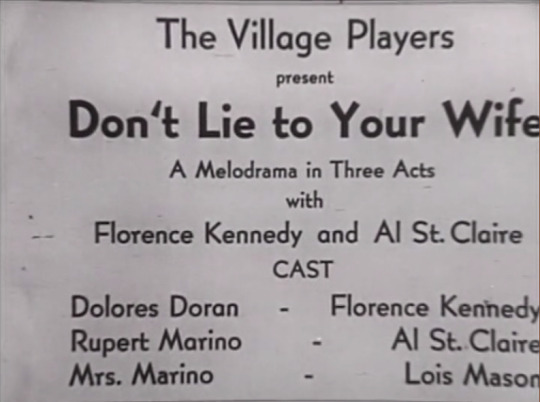
An insert shot of the printed program for the play that Florence is secretly performing in.
Dummy Ache was nominated for an Academy Award as the Best Short Subject of 1936. It lost to The Public Pays, an installment of MGM's Crime Does Not Pay series.
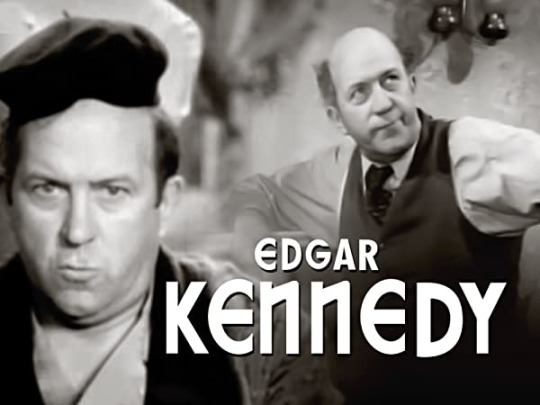
The "Average Man" short comedies starred Edgar Kennedy as a blustery, stubborn everyman determined to accomplish a household project or get ahead professionally, despite the meddling of his featherbrained wife (usually Florence Lake), her freeloading brother (originally William Eugene, then Jack Rice) and his dubious mother-in-law (Dot Farley). Kennedy pioneered the kind of domestic situation comedy that later became familiar on television. Each installment would end with Edgar embarrassed, humbled or defeated, looking at the camera and doing his patented slow burn. The Edgar Kennedy Series, with its theme song "Chopsticks", became a standard part of the movie-going experience: Kennedy made six "Average Man" shorts a year for 17 years.
From 1931 to 1948, Edgar Kennedy and Florence played husband and wife in more than 60 domestic comedy short films like Dummy Ache. Dot Farley and Jack Rice was in an equal number as Mother and Brother.
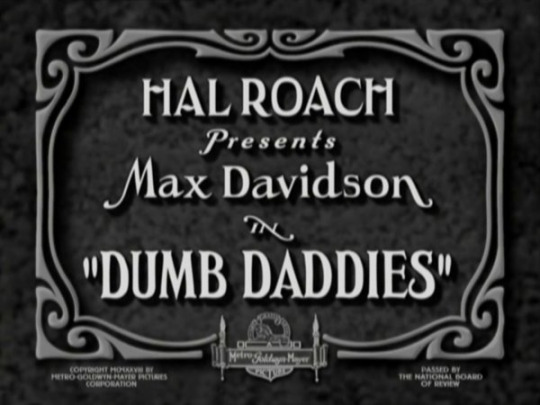
Dummy Ache is heavily reworked from a silent comedy short, Dumb Daddies (1928), starring Max Davidson. Edgar Kennedy himself had a part in Dumb Daddies as a policeman.
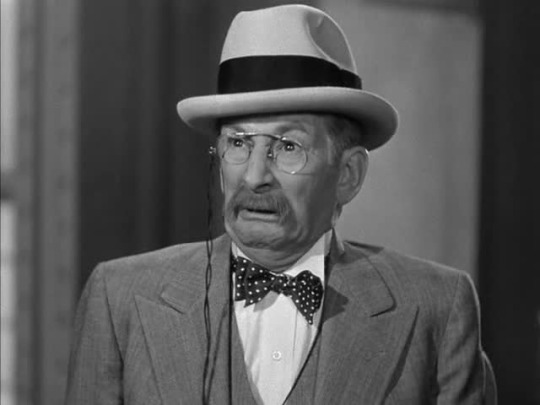
It was remade into When Wifie’s Away, also an RKO short, starring Leon Erroll (above) in 1941.
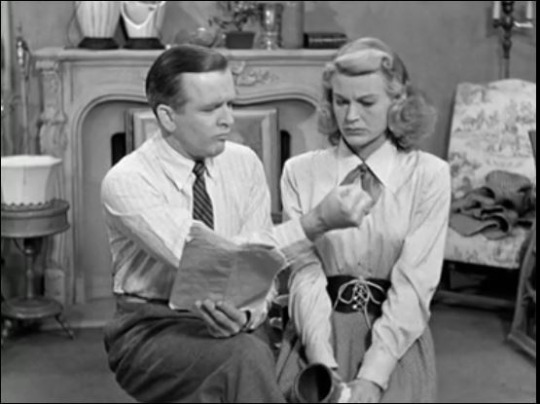
The premise of misunderstandings based on overheard rehearsals by actors was used by Desilu in 1952′s “New Neighbors” (ILL S1;E21), in which Lucy and Ethel spy on the O’Brien’s (Hayden Rorke and K.T. Stevens) mistaking their rehearsal for a spy drama for their intent to blow up the US capital! Just as in Dummy Ache, the plot ends with police intervention!
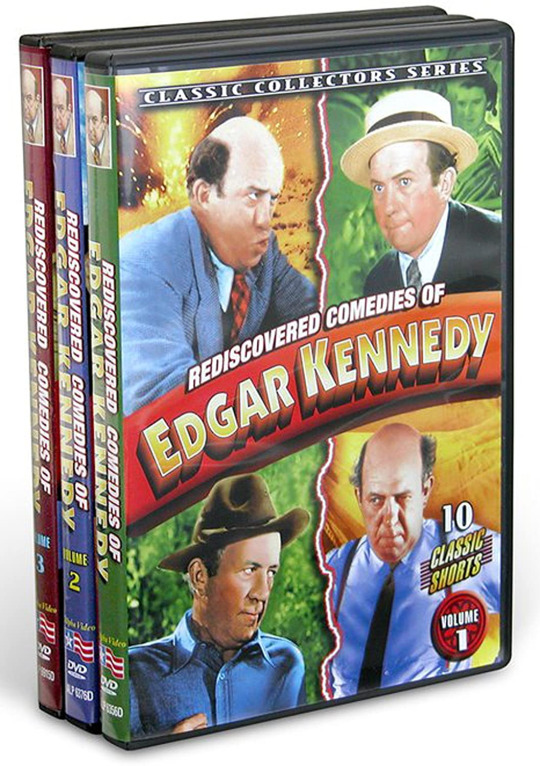
Most of the Edgar Kennedy Shorts are available on low-cost DVD.
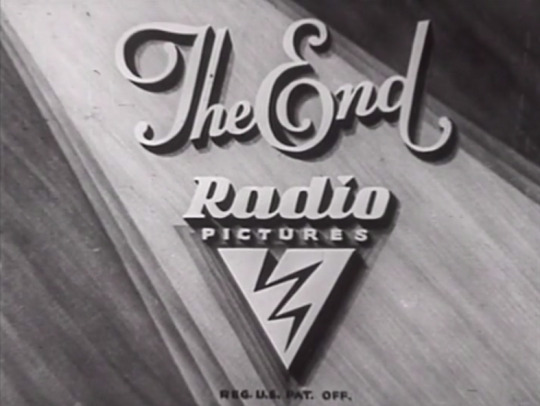
#Edgar Kennedy#RKO Radio Pictures#Lucille Ball#Florence Lake#Shorts#Billy Franey#George Lewis#Harry Bowen#Dot Farley#1936#Dummy Ache#Black and White Movies#I Love Lucy#Here's Lucy#Wifie's Away#Hayden Rorke#leon erroll
3 notes
·
View notes
Link
via Politics – FiveThirtyEight
Pretend I’m the owner of a polling company that surveys political races. I prominently advertise my results: According to a Walt Hickey Polling Inc. survey of 600 likely voters, John Doe is beating Jane Doe 58 percent to 40 percent — John Doe will likely win the election. (Let’s say it’s a race for the U.S. Senate.)
But then you keep reading and you notice that the sample on which my poll is based consists of 400 men and 200 women. You can’t really tell whether I’m adjusting the numbers, and if so, how. Would you trust that number? Unless there’s some state I don’t know about where men outnumber women 2-to-1, you shouldn’t.
So why aren’t we more skeptical of movie ratings that do the same thing?
It’s a worthwhile question, and lately it’s made it pretty hard for us to take the ratings provided on IMDb, the largest and most popular movie site on the internet, at face value. The Academy Awards rightly get criticized for reflecting the preferences of a small, unrepresentative sample of the population, but online ratings have the same problem. Even the vaunted IMDb Top 250 — nominally the best-liked films ever — is worth taking with 250 grains of salt. Women accounted for 52 percent of moviegoers in the U.S. and Canada in 2016, according to the most recent annual study by the Motion Picture Association of America. But on the internet, and on ratings sites, they’re a much smaller percentage.
“If you see any number that is a rating number or a number with a percentage sign, it may be compelling or meaningful and it may not be,” said Gary Langer, the president of Langer Research Associates, the polling firm that has long conducted surveys for ABC News. “And what we need to do rather than be seduced by the number is to subject it to meaningful inquiry as to how it was obtained.”
OK, but how skeptical should we be? To figure that out, I wanted to see how strong the male skew of raters is on IMDb and how big an effect that skew has on movies’ scores.
We’ll start with every film that’s eligible for IMDb’s Top 250 list. A film needs 25,000 ratings from regular IMDb voters to qualify for the list. As of Feb. 14, that was 4,377 titles. Of those movies, only 97 had more ratings from women than men. The other 4,280 films were mostly rated by men, and it wasn’t even close for all but a few films. In 3,942 cases (90 percent of all eligible films), the men outnumbered the women by at least 2-to-1. In 2,212 cases (51 percent), men outnumbered women more than 5-to-1. And in 513 cases (12 percent), the men outnumbered the women by at least 10-to-1.
Looking strictly at IMDb’s weighted average — IMDb adjusts the raw ratings it gets “in order to eliminate and reduce attempts at vote stuffing,” but it does not disclose how — the male skew of raters has a pretty significant effect. In 17 percent of cases, the weighted average of the male and female voters was equal, and in another 26 percent of cases, the votes of the men and women were within 0.1 points of one another. But when there was bigger disagreement — i.e. men and women rated a movie differently by 0.2 points or more, on average — the overall score overwhelmingly broke closer to the men’s rating than the women’s rating. The score was closer to the men’s rating more than 48 percent of the time and closer to the women’s rating less than 9 percent of the time, meaning that when there was disagreement, the male preference won out about 85 percent of the time.
That male skew of raters is also apparent in the 250 movies that make IMDb’s top list, which we pulled on Feb. 16:
So, what’s the issue here? If IMDb is content with its ratings being intended almost solely for men, then there isn’t one. (We reached out to IMDb for comment and for more information on how the site adjusts its ratings, but we received no response. So we don’t know, for example, if IMDb is already doing something to the data that accounts for the gender disparity in raters.) But if IMDb seeks to reflect the opinions of the actual movie-going population, the situation is grave.
Can we fix that? Langer is skeptical. Mainly, besides how simple it is for a dedicated individual or group to “manufacture” results, online data from a self-selected group of people is so inherently dubious that any reweighting of that data is also inherently dubious. You can’t just adjust troublesome data to make it reflect the world, he said.
“The notion that you can take bad data and weight it to be OK is … hazardous to your health,” Langer cautioned.
That said, since the scores of the most popular movie site on the internet are already being calculated based on an entirely self-selected sample, would it destroy the IMDb Top 250 to try to mimic actual movie audiences more? I don’t really think so. As a thought experiment, I used everything we know about IMDb’s rating adjustments — which is far from the full picture — and ran them on the ratings of the 4,377 eligible films after I adjusted the raw ratings to weight men’s and women’s views equally.
We can’t do an adjustment that allows us to perfectly replicate the top 250 — again, we don’t know what’s in the black box, so we can’t re-create it — but to approximate it, I excluded any film that didn’t either a) make the IMDb top 1,000 movies list or b) have a rating from the site’s top 1,000 users within 0.87 points1 of the rating from its users overall. This allows us to sidestep films that would have made the top 250 through vote-stuffing.
My main point is that overall, the naive reweighting didn’t destroy the general look of the 250, and if anything, it elevated films that may have been overlooked because one gender is vastly outnumbered.2
What if IMDb adjusted ratings toward gender parity?
Estimated highest-ranking films on IMDb if the men’s and women’s ratings were weighted toward 50-50 vs. IMDb’s actual rank as of Feb. 16, 2018
Rankings Year▲▼ Film▲▼ Actual▲▼ Women only▲▼ Men only▲▼ Gender- weighted▲▼ 1994 The Shawshank Redemption 1 1 1 1 1972 The Godfather 2 10 2 2 2008 The Dark Knight 4 3 3 3 2003 The Lord of the Rings: The Return of the King 8 2 4 4 1993 Schindler’s List 6 6 11 5 1999 Fight Club 10 5 8 6 2001 The Lord of the Rings: The Fellowship of the Ring 11 7 10 7 1957 12 Angry Men 5 27 7 8 1974 The Godfather: Part II 3 22 5 9 2010 Inception 14 8 6 10 1994 Forrest Gump 12 9 13 11 2002 The Lord of the Rings: The Two Towers 15 11 14 12 1994 The Lion King 47 4 29 13 1994 Pulp Fiction 7 15 9 14 2014 Interstellar 30 25 15 15 1999 The Green Mile 32 12 28 16 1975 One Flew Over the Cuckoo’s Nest 16 24 19 17 1966 The Good, the Bad and the Ugly 9 115 12 18 2006 The Prestige 48 26 16 19 1998 American History X 31 17 27 20 2012 The Dark Knight Rises 65 23 22 21 1997 Life Is Beautiful 25 16 41 22 1980 Star Wars: Episode V – The Empire Strikes Back 13 41 17 23 1994 Leon: The Professional 27 21 37 24 2002 City of God 21 64 20 25 1995 Se7en 22 28 23 26 2001 Spirited Away 28 13 56 27 1991 The Silence of the Lambs 23 20 33 28 2006 The Departed 40 35 26 29 1990 Goodfellas 17 71 18 30 2011 The Intouchables 37 19 52 31 2014 Whiplash 45 54 30 32 2000 Gladiator 46 44 24 33 2012 Django Unchained 60 29 31 34 2002 The Pianist 39 31 53 35 1946 It’s a Wonderful Life 24 56 51 36 1960 Psycho 34 55 40 37 1977 Star Wars: Episode IV – A New Hope 20 48 32 38 2009 Inglourious Basterds 97 32 43 39 1998 Saving Private Ryan 29 70 25 40 1995 The Usual Suspects 26 58 36 41 1999 The Matrix 18 62 21 42 2000 Memento 49 57 34 43 1942 Casablanca 36 73 42 44 1999 American Beauty 63 51 35 45 1985 Back to the Future 44 49 46 46 2001 A Beautiful Mind 144 34 68 47 1954 Rear Window 43 80 60 48 2000 Requiem for a Dream 80 50 49 49 2011 Harry Potter and the Deathly Hallows: Part 2 218 14 126 50 2006 The Lives of Others 58 86 78 51 2010 Shutter Island 177 39 59 52 2008 WALL-E 62 42 62 53 2004 Eternal Sunshine of the Spotless Mind 87 38 66 54 1980 The Shining 61 61 47 55 1997 Good Will Hunting 102 60 48 56 1971 A Clockwork Orange 84 79 50 57 2001 Amelie 82 30 90 58 1954 Seven Samurai 19 336 39 59 1983 Star Wars: Episode VI – Return of the Jedi 76 87 63 60 1992 Reservoir Dogs 77 94 64 61 2017 Coco 51 209 166 62 1988 Cinema Paradiso 54 165 97 63 1979 Apocalypse Now 50 219 38 64 1940 The Great Dictator 53 262 101 65 1950 Sunset Boulevard 55 190 108 66 1931 City Lights 35 294 92 67 1997 Princess Mononoke 64 118 100 68 2015 Room 143 82 139 69 2003 Pirates of the Caribbean: The Curse of the Black Pearl > 250 36 113 70 2004 Howl’s Moving Castle 137 43 216 71 1962 To Kill a Mockingbird 89 102 135 72 2009 Up 115 37 117 73 2014 Gone Girl 179 81 70 74 2010 Toy Story 3 98 66 82 75 1936 Modern Times 38 248 96 76 1988 Grave of the Fireflies 57 159 133 77 2006 Pan’s Labyrinth 130 74 91 78 2016 Hacksaw Ridge 175 161 124 79 1968 2001: A Space Odyssey 91 195 54 80 2007 Into the Wild 181 84 95 81 1958 Vertigo 72 154 87 82 2015 Inside Out 140 78 107 83 2005 Batman Begins 116 106 58 84 1975 Monty Python and the Holy Grail 103 123 104 85 2009 3 Idiots 93 203 93 86 2003 Oldeuboi 67 171 73 87 1964 Dr. Strangelove or: How I Learned to Stop Worrying and Love the Bomb 56 236 57 88 1991 Terminator 2 42 178 44 89 1959 North by Northwest 74 205 99 90 1968 Once Upon a Time in the West 33 447 55 91 1981 Raiders of the Lost Ark 41 131 65 92 1995 Toy Story 94 85 80 93 1952 Singin’ in the Rain 90 110 170 94 2016 La La Land 207 122 86 95 1979 Alien 52 151 67 96 1941 Citizen Kane 71 188 74 97 2002 Catch Me if You Can 219 97 81 98 1983 Scarface 105 181 69 99 1976 Taxi Driver 88 164 71 100 2014 The Grand Budapest Hotel 194 65 128 101 1987 Full Metal Jacket 92 177 83 102 2010 How to Train Your Dragon 176 47 165 103 1984 Amadeus 83 128 121 104 2007 There Will Be Blood 165 212 72 105 2012 The Avengers > 250 52 144 106 1984 Once Upon a Time in America 69 337 88 107 2013 The Wolf of Wall Street 150 158 45 108 2005 V for Vendetta 151 76 112 109 1939 Gone With the Wind 157 46 279 110 2003 Kill Bill: Vol. 1 174 89 114 111 1995 Braveheart 75 141 61 112 2003 Finding Nemo 166 53 151 113 1999 The Sixth Sense 160 75 116 114 2011 The Help 241 33 245 115 2015 Star Wars: The Force Awakens > 250 92 154 116 2015 Mad Max: Fury Road 204 135 79 117 2000 Snatch 100 144 76 118 2016 Dangal 73 649 195 119 2016 Zootopia > 250 95 187 120 2001 Donnie Darko 226 91 122 121 2008 Gran Torino 158 121 120 122 1989 Indiana Jones and the Last Crusade 112 156 84 123 2012 Jagten 101 183 141 124 1988 My Neighbor Totoro 132 112 183 125 1996 Trainspotting 156 107 127 126 2013 12 Years a Slave 201 100 131 127 1959 Some Like It Hot 118 124 186 128 1973 The Sting 95 284 143 129 2013 Prisoners 215 148 98 130 2017 Logan 202 193 103 131 2016 Your Name 79 399 190 132 2007 Taare Zameen Par 81 448 138 133 2011 A Separation 109 242 125 134 1997 Titanic > 250 45 188 135 2011 Warrior 154 213 134 136 2017 Dunkirk 236 192 145 137 2015 Spotlight 205 155 152 138 1986 Stand by Me 192 125 184 139 2014 X-Men: Days of Future Past > 250 113 159 140 2004 Kill Bill: Vol. 2 > 250 116 157 141 2014 The Imitation Game > 250 69 209 142 2010 The King’s Speech > 250 59 206 143 1986 Aliens 68 217 85 144 2004 Downfall 121 288 115 145 1998 Lock, Stock and Two Smoking Barrels 142 199 130 146 1997 L.A. Confidential 106 225 94 147 2016 Arrival > 250 169 137 148 1957 Paths of Glory 59 704 109 149 2017 Blade Runner 2049 147 368 102 150 1991 Beauty and the Beast 247 40 379 151 2014 Guardians of the Galaxy > 250 111 147 152 1962 Lawrence of Arabia 85 396 105 153 1993 Jurassic Park 198 150 118 154 1927 Metropolis 108 331 182 155 2016 Deadpool > 250 126 155 156 2012 The Hobbit: An Unexpected Journey > 250 90 192 157 2001 Monsters, Inc. 224 77 196 158 1988 Die Hard 122 220 77 159 1989 Dead Poets Society 238 103 239 160 2010 Black Swan > 250 98 161 161 2015 The Martian > 250 134 160 162 1957 Witness for the Prosecution 66 476 229 163 2004 Hotel Rwanda 190 176 181 164 2009 Star Trek > 250 117 199 165 2013 The Hobbit: The Desolation of Smaug > 250 109 205 166 2009 Hachi: A Dog’s Tale 212 127 288 167 2017 Three Billboards Outside Ebbing, Missouri 111 351 204 168 1981 Das Boot 70 603 111 169 1995 Heat 123 332 89 170 1978 The Deer Hunter 159 346 153 171 1980 The Elephant Man 148 261 177 172 1931 M 78 465 167 173 1950 All About Eve 114 227 302 174 1921 The Kid 99 459 249 175 1944 Double Indemnity 86 433 169 176 2013 Her > 250 194 106 177 2009 Mary and Max 178 175 274 178 2017 Thor: Ragnarok > 250 200 260 179 2013 Dallas Buyers Club > 250 146 175 180 1960 The Apartment 107 322 189 181 2008 In Bruges > 250 239 140 182 1998 The Truman Show 206 132 149 183 2010 Incendies 131 300 253 184 1939 The Wizard of Oz 232 119 241 185 2008 Slumdog Millionaire > 250 99 191 186 2007 No Country for Old Men 162 244 75 187 1999 The Boondock Saints > 250 254 250 188 2009 The Secret in Their Eyes 135 265 198 189 2016 Lion > 250 170 332 190 2017 Baahubali 2: The Conclusion > 250 1170 343 191 2015 The Revenant > 250 214 129 192 2004 Million Dollar Baby 203 163 162 193 2005 Babam ve Oglum 117 526 291 194 1963 The Great Escape 126 479 174 195 1948 Bicycle Thieves 96 458 202 196 2004 Harry Potter and the Prisoner of Azkaban > 250 72 339 197 2006 Blood Diamond > 250 172 212 198 1993 The Nightmare Before Christmas > 250 105 318 199 1974 Chinatown 129 360 158 200 2012 The Perks of Being a Wallflower > 250 108 232 201 1990 Edward Scissorhands > 250 67 357 202 1949 The Third Man 127 484 224 203 2003 Big Fish > 250 133 226 204 2013 Rush 193 252 172 205 1954 Dial M for Murder 155 352 233 206 1995 Before Sunrise 211 179 228 207 1940 Rebecca 173 250 350 208 1992 Unforgiven 120 543 110 209 1979 Life of Brian 183 266 179 210 1998 The Big Lebowski 167 256 123 211 1992 Aladdin > 250 120 308 212 2000 Amores Perros 209 260 225 213 2007 The Bourne Ultimatum 234 235 156 214 2007 Ratatouille > 250 138 211 215 1996 Fargo 161 230 164 216 1995 Twelve Monkeys 245 238 163 217 1965 For a Few Dollars More 104 792 142 218 1980 Raging Bull 124 599 119 219 2005 Serenity > 250 208 295 220 1967 Cool Hand Luke 172 539 215 221 1969 Butch Cassidy and the Sundance Kid 210 421 231 222 1957 The Bridge on the River Kwai 138 581 180 223 1988 Rain Man > 250 182 217 224 1965 The Sound of Music > 250 101 516 225 1957 The Seventh Seal 141 462 223 226 1993 In the Name of the Father 188 408 268 227 2014 Wild Tales 185 323 282 228 1939 Mr. Smith Goes to Washington 145 466 297 229 2006 The Pursuit of Happyness > 250 185 220 230 1995 Casino 146 419 136 231 1987 The Princess Bride 214 136 298 232 1950 Rashomon 110 626 185 233 2008 Iron Man > 250 140 244 234 1975 Dog Day Afternoon > 250 417 252 235 2014 PK > 250 646 246 236 2005 Sin City > 250 231 148 237 1954 On the Waterfront 139 546 237 238 1982 Gandhi 227 370 221 239 2017 Call Me by Your Name 186 347 528 240 2011 X: First Class > 250 157 248 241 1948 The Treasure of the Sierra Madre 119 786 230 242 2014 Kingsman: The Secret Service > 250 174 259 243 2012 Life of Pi > 250 152 257 244 2016 Captain America: Civil War > 250 215 265 245 2005 Harry Potter and the Goblet of Fire > 250 96 431 246 2004 The Notebook > 250 63 452 247 1976 Rocky 220 442 132 248 2013 About Time > 250 189 269 249 1977 Annie Hall 233 289 218 250 2003 Mystic River > 250 245 219 251 2011 The Girl With the Dragon Tattoo > 250 216 222 252 1992 Scent of a Woman > 250 276 255 253 2007 Atonement > 250 139 366 254 2011 The Artist > 250 197 325 255 2014 Big Hero 6 > 250 129 462 256 1986 Platoon 187 490 176 257 1984 Nausicaa of the Valley of the Wind 213 378 301 258 1973 The Exorcist > 250 309 178 259 1925 The Gold Rush 136 684 306 260 1953 Roman Holiday > 250 206 426 261 1982 The Thing 163 528 146 262 1984 The Terminator 229 318 150 263 1985 The Breakfast Club > 250 137 391 264 2007 Persepolis > 250 291 477 265 2004 Before Sunset > 250 263 240 266 1959 Ben-Hur 195 481 227 267 1961 Judgment at Nuremberg 134 752 375 268 2013 The Hunger Games: Catching Fire > 250 83 525 269 2004 The Incredibles > 250 222 208 270 2000 Remember the Titans > 250 312 346 271 2001 Shrek > 250 143 323 272 1934 It Happened One Night 184 366 424 273 2001 Harry Potter and the Sorcerer’s Stone > 250 88 530 274 2006 Casino Royale > 250 282 200 275 2014 Edge of Tomorrow > 250 293 203 276 2014 How to Train Your Dragon 2 > 250 186 395 277 1941 The Maltese Falcon 216 541 271 278 2014 Birdman or (The Unexpected Virtue of Ignorance) > 250 299 168 279 1974 Young Frankenstein > 250 443 334 280 1957 Wild Strawberries 152 609 329 281 2001 Ocean’s Eleven > 250 221 262 282 2004 Shaun of the Dead > 250 233 261 283 1967 The Graduate > 250 285 254 284 2006 The Fall > 250 223 594 285 1995 La Haine 231 561 276 286 2006 Little Miss Sunshine > 250 149 349 287 2003 Dogville > 250 328 365 288 2015 The Hateful Eight > 250 411 171 289 2005 Pride & Prejudice > 250 68 754 290 2014 Nightcrawler > 250 380 173 291 1990 Dances With Wolves > 250 375 264 292 1986 Castle in the Sky 250 379 310 293 2010 Tangled > 250 93 599 294 1999 The Iron Giant > 250 418 312 295 2000 In the Mood for Love 240 358 423 296 2016 Hidden Figures > 250 180 651 297 2008 Yip Man > 250 744 214 298 1951 Strangers on a Train > 250 478 371 299 1948 Rope > 250 503 369 300 2009 Moon > 250 350 284 301 2016 Manchester by the Sea > 250 427 243 302 1951 A Streetcar Named Desire > 250 348 448 303 1986 Ferris Bueller’s Day Off > 250 255 303 304 2001 Mulholland Drive > 250 349 242 305 2014 Captain America: The Winter Soldier > 250 204 316 306 2009 District 9 > 250 324 193 307 1982 Blade Runner 149 341 197 308 1999 Magnolia > 250 444 194 309 1985 Brazil > 250 554 287 310 2002 The Bourne Identity > 250 298 256 311 2002 Hero > 250 492 355 312 2005 Cinderella Man > 250 495 286 313 2000 Crouching Tiger, Hidden Dragon > 250 354 313 314 1999 Toy Story 2 > 250 249 266 315 2013 Star Trek: Into Darkness > 250 191 417 316 1968 Rosemary’s Baby > 250 343 304 317 1946 Notorious > 250 500 450 318 1976 Network 191 720 273 319 2016 Rogue One > 250 283 337 320 1997 Children of Heaven 128 678 519 321 2007 Hot Fuzz > 250 259 331 322 1983 A Christmas Story > 250 415 377 323 2004 Crash > 250 226 336 324 2010 Harry Potter and the Deathly Hallows: Part 1 > 250 104 696 325 1995 Dilwale Dulhania Le Jayenge > 250 902 437 326 2013 Captain Phillips > 250 270 340 327 2005 Walk the Line > 250 224 418 328 2017 Guardians of the Galaxy Vol. 2 > 250 241 446 329 2007 Elite Squad > 250 974 307 330 1982 E.T. the Extra-Terrestrial > 250 246 370 331 2000 Dancer in the Dark > 250 400 447 332 1966 Persona 196 548 400 333 2009 The Girl With the Dragon Tattoo > 250 269 412 334 2008 Let the Right One In > 250 384 270 335 2014 Boyhood > 250 335 238 336 2012 Barfi! > 250 877 440 337 2009 Mr. Nobody > 250 253 434 338 1993 True Romance > 250 557 280 339 2010 My Name Is Khan > 250 535 517 340 2009 The Hangover > 250 258 247 341 1926 The General 153 891 381 342 2012 Moonrise Kingdom > 250 232 386 343 2012 Les Miserables > 250 168 499 344 1979 Stalker 197 767 347 345 2017 Baby Driver > 250 389 305 346 2012 Silver Linings Playbook > 250 237 251 347 2016 Contratiempo > 250 589 561 348 2004 The Sea Inside > 250 428 507 349 2006 Apocalypto > 250 364 373 350 1959 The 400 Blows 200 637 374 351 2017 Get Out > 250 344 314 352 1988 Akira > 250 882 267 353 1964 Fistful of Dollars > 250 950 278 354 2009 The Blind Side > 250 198 488 355 2008 Taken > 250 257 315 356 2008 The Curious Case of Benjamin Button > 250 211 320 357 2007 The Diving Bell and the Butterfly > 250 432 397 358 2011 Drive > 250 361 207 359 2003 Spring, Summer, Fall, Winter… and Spring > 250 572 416 360 1987 The Untouchables > 250 604 300 361 1944 Arsenic and Old Lace > 250 464 617 362 1996 Sling Blade > 250 715 464 363 2008 The Boy in the Striped Pajamas > 250 207 601 364 2002 Talk to Her > 250 394 430 365 1979 Manhattan > 250 508 359 366 2013 Short Term 12 > 250 474 529 367 2015 Straight Outta Compton > 250 513 459 368 2010 Despicable Me > 250 145 543 369 2000 Almost Famous > 250 320 322 370 1982 Pink Floyd: The Wall > 250 656 510 371 2006 Children of Men > 250 355 263 372 2014 Ex Machina > 250 362 272 373 1997 Boogie Nights > 250 660 213 374 2013 Queen > 250 1005 484 375 1973 Papillon > 250 831 354 376 2010 Elite Squad: The Enemy Within > 250 1116 352 377 2014 The Theory of Everything > 250 173 591 378 1940 The Philadelphia Story > 250 393 766 379 1940 The Grapes of Wrath 221 728 403 380 1971 Harold and Maude > 250 436 685 381 2016 Captain Fantastic > 250 363 505 382 1993 What’s Eating Gilbert Grape > 250 202 574 383 2003 Memories of Murder 199 916 330 384 2009 Avatar > 250 228 296 385 2002 Infernal Affairs 243 875 292 386 1994 Three Colors: Red > 250 644 415 387 1976 All the President’s Men > 250 755 420 388 2016 The Handmaiden 246 595 549 389 1955 The Night of the Hunter > 250 737 471 390 1995 Underground > 250 751 541 391 1990 The Godfather: Part III > 250 440 358 392 1984 Paris, Texas 244 736 455 393 2010 The Fighter > 250 452 283 394 1966 Who’s Afraid of Virginia Woolf? > 250 537 565 395 2014 The Fault in Our Stars > 250 187 513 396 2005 Brokeback Mountain > 250 162 611 397 2007 Chak de! India > 250 1278 317 398 2006 Lucky Number Slevin > 250 416 363 399 1991 JFK > 250 847 324 400 1998 The Legend of 1900 242 608 607 401 2017 The Greatest Showman > 250 272 972 402 2000 O Brother, Where Art Thou? > 250 401 387 403 2010 The Social Network > 250 414 201 404 1997 Gattaca > 250 356 390 405 2012 Argo > 250 243 409 406 1993 Groundhog Day 230 457 210 407 1962 The Manchurian Candidate > 250 849 506 408 1984 This Is Spinal Tap > 250 762 348 409 2013 Frozen > 250 130 692 410 1990 Misery > 250 402 466 411 2007 The Man From Earth > 250 764 290 412 1968 Planet of the Apes > 250 789 294 413 2000 Cast Away > 250 314 328 414 1998 Black Cat, White Cat > 250 676 605 415 1971 Willy Wonka & the Chocolate Factory > 250 333 496 416 1985 Ran 133 1207 234 417 2008 Changeling > 250 296 405 418 2006 Rang De Basanti 180 1218 236 419 1989 Glory > 250 768 427 420 1989 Back to the Future Part II > 250 374 338 421 2004 The Bourne Supremacy > 250 413 333 422 2006 Letters From Iwo Jima > 250 791 364 423 1952 High Noon > 250 890 407 424 1997 The Fifth Element > 250 247 546 425 2017 Wonder Woman > 250 196 706 426 1995 Ghost in the Shell > 250 917 361 427 1961 Yojimbo 113 1281 235 428 2015 Bahubali: The Beginning > 250 1491 393 429 2007 Zodiac > 250 435 275 430 1990 Awakenings > 250 467 559 431 1993 Three Colors: Blue > 250 552 603 432 1950 Harvey > 250 645 680 433 2014 Fury > 250 449 341 434 1993 Philadelphia > 250 277 644 435 1998 The Celebration > 250 785 404 436 1946 The Big Sleep > 250 750 489 437 1987 Wings of Desire > 250 622 638 438 2016 Hunt for the Wilderpeople > 250 605 701 439 1994 Chungking Express > 250 712 600 440 2012 Kahaani > 250 1212 478 441 1958 Touch of Evil 228 1008 356 442 2004 Finding Neverland > 250 240 570 443 2004 The Machinist > 250 330 438 444 1987 Empire of the Sun > 250 530 668 445 2012 Wreck-It Ralph > 250 281 458 446 1968 Night of the Living Dead > 250 837 385 447 1993 Carlito’s Way > 250 876 326 448 1996 The Bandit 171 1181 362 449 1997 The Game > 250 441 367 450 1946 The Best Years of Our Lives 239 772 604 451 2004 Man on Fire > 250 406 444 452 2014 The Lego Movie > 250 397 380 453 1964 Mary Poppins > 250 234 806 454 1959 Anatomy of a Murder > 250 864 515 455 1999 Being John Malkovich > 250 392 383 456 2015 The Big Short > 250 515 299 457 2008 The Wrestler > 250 621 289 458 1954 La Strada > 250 748 623 459 1999 All About My Mother > 250 405 712 460 2007 3:10 to Yuma > 250 511 456 461 1975 Barry Lyndon 225 991 281 462 2009 Fantastic Mr. Fox > 250 423 445 463 1922 Nosferatu > 250 716 468 464 2017 Wonder > 250 577 862 465 2006 The Last King of Scotland > 250 455 535 466 1980 The Blues Brothers > 250 687 372 467 2012 Skyfall > 250 295 401 468 1997 As Good as It Gets > 250 367 396 469 1955 Diabolique 223 910 534 470 2016 Kubo and the Two Strings > 250 600 616 471 1972 Solaris > 250 996 429 472 2013 Before Midnight > 250 453 449 473 1989 Kiki’s Delivery Service > 250 357 674 474 1994 Ed Wood > 250 545 384 475 1960 La Dolce Vita > 250 793 512 476 1993 The Fugitive > 250 569 392 477 1967 Bonnie and Clyde > 250 648 501 478 1996 Primal Fear > 250 426 578 479 2002 Harry Potter and the Chamber of Secrets > 250 142 831 480 1999 The Insider > 250 863 378 481 2004 3-Iron > 250 651 719 482 1965 Doctor Zhivago > 250 714 577 483 1927 Sunrise 164 995 633 484 2009 Zombieland > 250 329 414 485 2001 Lagaan: Once Upon a Time in India 249 1190 293 486 1993 Tombstone > 250 794 526 487 2008 Departures > 250 731 613 488 2009 (500) Days of Summer > 250 310 345 489 1969 Midnight Cowboy > 250 818 502 490 1961 Breakfast at Tiffany’s > 250 210 802 491 2007 Harry Potter and the Order of the Phoenix > 250 147 837 492 2004 The Butterfly Effect > 250 303 428 493 2003 21 Grams > 250 410 500 494 2016 Doctor Strange > 250 287 556 495 2009 Harry Potter and the Half-Blood Prince > 250 160 846 496 1953 Stalag 17 > 250 1059 642 497 1962 What Ever Happened to Baby Jane? > 250 585 793 498 2007 Once > 250 463 487 499 2013 Mandariinid > 250 666 865 500
IMDb makes adjustments to its raw ratings but does not disclose its methodology. Therefore, these rankings — which start with the raw ratings — may not match a gender-weighted version of a list made by IMDb itself because we can’t re-create the site’s adjustments.
Source: IMDb
The top 100 largely includes films from the original list of 250, and the additions to the list — there are a lot of best picture winners among the newbies — appear mainly in the back half of the 250.
Attempting to reflect a target population is a common practice in many fields that use surveys. It’s not clear to me why movie rating sites don’t do it — or, at the least, why they don’t indicate that their scores are almost all based mostly on the opinions of male users.
4 notes
·
View notes
Text
2017 Movie Odyssey
So ends the 2017 Movie Odyssey. Last year, I wrote that I did not foresee ever surpassing the 200+ movie mark for a long, long time. But look what happened here (outside of May because that was a hectic time in the Master’s program for sure). The 2017 Movie Odyssey consisted of 232 films - 180 feature-length films and fifty-two shorts. A century of filmmaking was covered this year, from 1917 to 2017. If I do have one regret this year... it’s that African films were not featured this year (due to availability issues and me not having enough money; I tend to watch things legally if possible). I hope to assuage that next year for a more representative Movie Odyssey.
For all of you out there who supported the Movie Odyssey in your own ways – whether reading, liking, commenting, or reblogging a write-up or sitting down with me to a new movie or talking to me about any movie... my thanks to all of you. None of this possible without you, and I hope you find that, through this blog, classic movies seem more approachable and welcoming and you are inspired to see some and learn about them yourself. A Happy New Year to all, and I’ll see you for the 2018 leg of the Movie Odyssey very soon (oh boy the Winter Olympics and World Cup are gonna chip away at the final count next year)!
As many know, all ratings are based on my imdb rating and half-points are always rounded down. My interpretation of that ratings system can be found here. A 6/10 is considered the borderline between “passing” and “failing”. Feature-length narrative films, short films, and documentaries are rated within their respective spectrums.
JANUARY
1. Marnie (1964) – 6/10 2. The Moon Is Down (1943) – 7/10 3. Sense and Sensibility (1995) – 8.5/10 4. The Big House (1930) – 7.5/10 5. Manchester by the Sea (2016) – 7/10 6. The Far Country (1954) – 7/10 7. Kung Fu Hustle (2004, Hong Kong/China) – 7/10 8. Road to Singapore (1940) – 6/10 9. A Clever Dummy (1917 short) – 5/10 10. Hidden Figures (2016) – 7.5/10 11. Teddy at the Throttle (1917 short) – 7.5/10 12. The Last of the Mohicans (1920) – 7/10 13. Sweet Smell of Success (1957) – 10/10 14. The Red Turtle (2016, France/Belgium/Japan) – 9/10 15. Life, Animated (2016) – 7.5/10 16. In the Mood for Love (2000, Hong Kong) – 10/10
FEBRUARY
17. Lion (2016) – 7/10 18. It’s Always Fair Weather (1955) – 7.5/10 19. Fences (2016) – 8.5/10 20. Shenandoah (1965) – 7/10 21. Caged (1950) – 8/10 22. Pearl (2016 short) – 7.5/10 23. Blind Vaysha (2016 short) – 8/10 24. Asteria (2016 short) – 6/10 25. The Head Vanishes (2016 short) – 6/10 26. Once Upon a Line (2016 short) – 7/10 27. Pear Cider and Cigarettes (2016 short) – 8/10 28. Sing (2016 short, Hungary) – 7.5/10 29. Silent Nights (2016 short, Denmark) – 6/10 30. Timecode (2016 short, Spain) – 7/10 31. Ennemis intérieurs (2016 short, France) – 8.5/10 32. La femme et le TGV (2016 short, Switzerland) – 8/10 33. Joe’s Violin (2016 short) – 7/10 34. Extremis (2016 short) – 8/10 35. 4.1 Miles (2016 short, Greece) – 9/10 36. Nashville (1975) – 7.5/10 37. The Romance of Transportation in Canada (1952 short) – 7/10
MARCH
38. My Life as a Zucchini (2016, Switzerland) – 8/10 39. Lili (1953) – 7/10 40. The Man from U.N.C.L.E. (2015) – 6/10 41. Captain Blood (1935) – 9.5/10 42. Logan (2017) – 7/10 43. Friendly Persuasion (1956) – 9/10 44. Ducks and Drakes (1921) – 7/10 45. What Dreams May Come (1998) – 6/10 46. Bright Road (1953) – 6/10 47. Snow Gets in Your Eyes (1938 short) – 5/10 48. Jungle Cat (1959) – 6.5/10 49. The Salesman (2016, Iran) – 8.5/10 50. Good Scouts (1938 short) – 7.5/10 51. All in a Nutshell (1949 short) – 8/10 52. The Hound That Thought He Was a Raccoon (1960) – 7/10 53. Winter Storage (1949 short) – 7/10 54. Out of Scale (1951 short) – 8/10 55. The Incredible Journey (1963) – 7/10 56. Follow Me, Boys! (1966) – 7/10 57. Charlie, the Lonesome Cougar (1967) – 5.5/10 58. Belladonna of Sadness (1973, Japan) – 6/10 59. Ponyo (2008, Japan) – 7/10 60. My Cousin Rachel (1952) – 7.5/10 61. Road to Perdition (2002) – 9/10
APRIL
62. The X from Outer Space (1967, Japan) – 3/10 63. The Blue Gardenia (1953) – 6.5/10 64. Get Out (2017) – 7.5/10 65. Fantastic Planet (1973, France/Czechoslovakia) – 8/10 66. 5 Centimeters Per Second (2007, Japan) – 6/10 67. Your Name (2016, Japan) – 7.5/10 68. The Outlaw and His Wife (1918, Sweden) – 7/10 69. Mail Early (1941 short) – experimental film, score withheld 70. Boogie-Doodle (1948 short) – experimental film, score withheld 71. A Chairy Tale (1957 short) – 9/10 72. Very Nice, Very Nice (1961 short) – experimental film, score withheld 73. Fine Feathers (1968) – 7/10 74. What on Earth! (1967 short) – 8/10 75. Walking (1968 short) – 7/10 76. Notes on a Triangle (1966 short) – experimental film, score withheld 77. The Three Faces of Eve (1957) – 7.5/10 78. Peeping Tom (1960) – 7.5/10 79. Porco Rosso (1992, Japan) – 8/10 80. MacArthur (1977) – 6/10
MAY
81. Dr. Goldfoot and the Bikini Machine (1965) – 4/10 82. Scarlet Street (1945) – 8.5/10 83. Tremors (1990) – 7/10 84. The Crucified Lovers (1954, Japan) – 7.5/10 85. Akeelah and the Bee (2006) – 8/10
JUNE
86. Wonder Woman (2017) – 7/10 87. Pollyanna (1960) – 7.5/10 88. Mickey’s Polo Team (1936 short) – 8/10 89. Tales of Manhattan (1942) – 7/10 90. The Horse with the Flying Tale (1960) – 7/10 91. Sound of the Mountain (1954, Japan) – 9/10 92. Return of the Fly (1959) – 4/10 93. Friday the 13th (1980) – 4/10 94. The Tattooed Police Horse (1964) – 6/10 95. Dr. Jack (1922) – 7/10 96. Pat Garrett and Billy the Kid (1973) – 7/10 97. Friday the 13th Part 2 (1981) – 5/10 98. The Great Man (1956) – 8/10 99. Sparrows (1926) – 7.5/10 100. Seven Days to Noon (1950) – 9/10 101. My Neighbor Totoro (1988, Japan) – 8.5/10 102. The Pocket Man (2016 short, France) – 7/10 103. Snack Attack (2012 short) – 7/10 104. You Were Never Lovelier (1942) – 7/10 105. San Francisco (1936) – 7.5/10 106. Eraserhead (1977) – 6.5/10
JULY
107. The Beguiled (2017) – 7/10 108. Summer Magic (1963) – 6/10 109. The Southerner (1945) – 9/10 110. The Statue of Liberty (1985) – 6/10 111. They Live by Night (1948) – 8/10 112. A Little Romance (1979) – 6/10 113. Conflagration (1958, Japan) – 6.5/10 114. The Naughty Twenties (1951 short) – 5/10 115. The Fastest Gun Alive (1956) – 7/10 116. For Your Eyes Only (1981) – 6/10 117. A Man There Was (1917, Sweden) – 9.5/10 118. His Royal Slyness (1920 short) – 6/10 119. Now or Never (1921 short) – 6.5/10 120. Among Those Present (1921 short) – 6/10 121. Dawn of the Planet of the Apes (2014) – 7.5/10 122. Independence Day (1996) – 5/10 123. Yoyo (1965, France) – 8/10 124. The Man Who Knew Too Much (1934) - 6.5/10 125. War for the Planet of the Apes (2017) – 7.5/10 126. The Lady Vanishes (1938) – 10/10 127. Funny Face (1957) – 9/10 128. A Brighter Summer Day (1991, Taiwan) – 9.5/10 129. A Sailor-Made Man (1921) – 6/10 130. Much Ado About Nothing (1993) – 8/10 131. Dunkirk (2017) – 8.5/10 132. Lost Horizon (1937) – 8/10 133. The Man from Snowy River (1982) – 7.5/10 134. A Touch of Zen (1971, Taiwan) – 10/10
AUGUST
135. A Double Life (1947) – 6/10 136. Tokyo Chorus (1931, Japan) – 7/10 137. In a Heartbeat (2017 short) – 7.5/10 138. Valerian and the City of a Thousand Planets (2017) – 4.5/10 139. Twelve O’Clock High (1949) – 9/10 140. The Big Clock (1948) – 7/10 141. Pink Floyd – The Wall (1982) – 8/10 142. Record of a Tenement Gentleman (1947, Japan) – 9/10 143. Octopussy (1983) – 6/10 144. West of Zanzibar (1928) – 6/10 145. Take Me Out to the Ball Game (1949) – 7/10 146. Detroit (2017) – 5.5/10 147. That Funny Feeling (1965) – 6/10 148. Kid Galahad (1962) – 6/10 149. Tokyo Twilight (1957, Japan) – 10/10 150. In This Corner of the World (2016, Japan) – 7/10 151. The Bedford Incident (1965) – 7.5/10 152. Johnny Express (2014 short) – 6/10 153. Carpark (2013 short) – 6/10 154. Castle in the Sky (1986, Japan) – 8/10 155. The Goonies (1985) – 7.5/10 156. State of the Union (1948) – 6/10
SEPTEMBER
157. Beyond the Poseidon Adventure (1979) – 3/10 158. Muscle Beach Party (1964) – 4/10 159. The Nutty Professor (1963) – 7/10 160. Camille (1921) – 6.5/10 161. Aguirre, the Wrath of God (1972, West Germany) – 8/10 162. Independence Day: Resurgence (2016) – 2/10 163. It (2017) – 7/10 164. Ocean Waves (1993, Japan) – 6/10 165. Monterey Pop (1968) – 8/10 166. Don’t Look Back (1967) – 9/10 167. Tyrus (2015) – 8.5/10
OCTOBER
168. A Star Is Born (1937) – 8/10 169. Swiss Family Robinson (1960) – 6/10 170. Revenge of the Nerds (1984) – 5/10 171. Horton Hears a Who! (2008) – 6/10 172. Freaky Friday (1976) – 6/10 173. The Great Muppet Caper (1981) – 7.5/10 174. Mr. & Mrs. ’55 (1955, India) – 8/10 175. Island of Lost Souls (1932) – 9.5/10 176. The Little Broadcast (1943 short) – 6.5/10 177. Hoola Boola (1941 short) – 6/10 178. The Sleeping Beauty (1935 short) – 7/10 179. Tulips Shall Grow (1942 short) – 8.5/10 180. Charulata (1964, India) – 8/10 181. Together in the Weather (1946 short) – 6/10 182. John Henry and the Inky-Poo (1946 short) – 7.5/10 183. Philips Cavalcade (1934 short) – 7/10 184. Jasper in a Jam (1946 short) – 8/10 185. Tubby the Tuba (1947 short) – 9/10 186. The Puppetoon Movie (1987) – 7/10 187. Brides of Dracula (1960) – 7/10 188. Blackbeard’s Ghost (1968) – 7/10 189. Candleshoe (1977) – 6/10 190. Jigoku (1960, Japan) – 5.5/10 191. Blacula (1972) – 6/10 192. Willard (1971) – 4/10 193. Ben (1972) – 4.5/10
NOVEMBER
194. The Coward (1965, India) – 7/10 195. The Happening (2008) – 2/10 196. Tom Thumb (1958) – 6.5/10 197. Strike (1925, Soviet Union) – 7.5/10 198. Loving Vincent (2017) – 7/10 199. Destry Rides Again (1939) – 7.5/10 200. The Master Race (1944) – 6/10 201. Justice League (2017) – 6/10 202. Sissi (1955, Austria) – 7.5/10 203. Sissi: The Young Empress (1956, Austria) – 7/10 204. The Sandlot (1993) – 7/10 205. Olaf’s Frozen Adventure (2017 short) – 4/10 206. Coco (2017) – 8/10 207. Sissi – Fateful Years of an Empress (1957, Austria) – 7/10 208. The Florida Project (2017) – 8.5/10 209. The Mortal Storm (1940) – 7/10 210. The Breadwinner (2017) – 8/10 211. Spencer’s Mountain (1963) – 6/10 212. Lady Bird (2017) – 9/10
DECEMBER
213. The Four Horsemen of the Apocalypse (1921) – 8.5/10 214. The Secret Life of Bees (2008) – 7/10 215. Murder on the Orient Express (2017) – 5.5/10 216. So You Think You’re Allergic (1945 short) – 5/10 217. Three Billboards Outside Ebbing, Missouri (2017) – 7.5/10 218. The Shape of Water (2017) – 8.5/10 219. Lonely Are the Brave (1962) – 9.5/10 220. Star Wars: The Last Jedi (2017) – 7/10 221. They Won’t Forget (1937) – 8/10 222. It Came from Outer Space (1953) – 6.5/10 223. Brave Little Tailor (1938 short) – 8/10 224. The Story of Robin Hood and His Merrie Men (1952) – 6/10 225. The Sign of Zorro (1958) – 5/10 226. Kong: Skull Island (2017) – 6.5/10 227. Flipped (2010) – 6/10 228. Bardelys the Magnificent (1926) – 7.5/10 229. There’s No Business Like Show Business (1954) – 7/10 230. Swim Team (2016) – 7/10 231. Toby Tyler (1960) – 5/10 232. The Liberator (2013, Venezuela) – 6/10
All scores are subject to change (upgrades and downgrades) upon a rewatch.
3 notes
·
View notes
Text
La emotiva y valiente historia real detrás de la película “Erin Brockovich”, por la cual Julia Roberts ganó un Oscar

Compártelo en Facebook
Tuitéalo
A veces, la ayuda y la búsqueda de honestidad vienen de donde menos se demora. Erin Brockovich es un buen ejemplo de ello, una mujer sin formación profesional en leyes que encabezó una batalla admitido contra una corporación millonaria. Su historia fue merecedora de la película que lleva su nombre en el año 2000, pero ¿qué hay más allá de lo que vemos en el filme?
Genial.guru quiere compartir contigo cómo es que Erin Brockovich pasó de ser una religiosa soltera con problemas económicos a una reconocida agitador y consultora admitido.
Su vida antiguamente de los litigios
Antes de convertirse en una conocida defensora del consumidor y ser interpretada por Julia Roberts en la pantalla magnate, Erin Brockovich tuvo una vida casi como la de cualquier persona. Nació en Lawrence, Kansas, el 22 de junio de 1960 y fue la pequeño de cuatro hermanos en una comunidad de clase media.
Desde pequeña, fue diagnosticada como disléxica y eso influyó en que no fuera una estudiante particularmente buena. Después de graduarse de la preparatoria, estuvo brevemente en la Universidad Estatal de Kansas, pero luego ingresó al Wade College en Dallas, Texas, y obtuvo un límite asociado en Artes Aplicadas en 1980.
Junto a una amiga, decidió mudarse a Newport Beach, California y ahí comenzó a trabajar como aprendiz de dirección para la condena de almacenes Kmart, pero renunció luego de unos meses. En 1981, se convirtió en reina de belleza al participar en el concurso Miss Costa del Pacífico y resultar ganadora.
Cuando Erin tenía 28 primaveras, se casó con su primer marido, Shawn Brown, vivieron en diferentes partes de Estados Unidos y tuvieron dos hijos, Matthew y Katie, pero acabaron divorciándose en 1987 tras cinco primaveras de boda.
Erin se había convertido en religiosa soltera, así que para abastecer a su comunidad, comenzó a trabajar en una firma de corretaje inmobiliario en Reno, Nevada. Allí conoció a quien sería su segundo marido en 1989, un hombre llamado Steve Brockovich, pero su boda duró al punto que duró un año y Erin ya estaba en estado de buena esperanza de su tercera hija, Elizabeth.
El caso que la hizo famosa
Tras su divorcio, Erin sufrió un choque automovilístico en el que resultó herida y tuvo que someterse a una cirugía de cuello. Después de eso, se fue a existir al valle de San Fernando, en Los Ángeles, donde contrató al pupitre de abogados Masry & Vititoe para que la representaran en su caso contra el conductor responsable del choque. Erin consiguió una indemnización más pequeña de lo que esperaba, pero el abogado Ed Masry le ofreció un trabajo en su pupitre.
Mientras Erin revisaba el papeleo de un caso de capital raíces que implicaba a la empresa Pacific Gas & Electric (PG&E), notó poco que le pareció extraño; entre los archivos, encontró registros médicos y pruebas de crimen, poco congruo inusual para un caso que se suponía era netamente inmobiliario.
Curiosa por naturaleza, Erin pidió permiso a Masry para investigar más el asunto y visitó a los dueños de una de las casas que PG&E estaba intentando comprar en los alrededores de su planta en Hinkley, en el desierto de California. Entonces descubrió que la empresa había estado pagando los gastos médicos por las enfermedades de esa comunidad, poco que definitivamente no era casualidad ni una muestra de dadivosidad desinteresada.
Erin visitó a numerosas familias de Hinkley que consumían agua potable de la misma fuente y uno o más miembros de la comunidad habían enfermado, así logró vincular el ascenso en el número de enfermos y la presencia de cromo hexavalente (cromo VI) en el agua. Este compuesto tiene usos industriales como preservación de la madera y revestimiento anticorrosivo, pero correcto a su poder oxidante, es en extremo tóxico y cancerígeno.
La contaminación del agua con cromo VI se debió a una instalación de PG&E construida en 1952 como parte de una tubería de gas en la que usó este compuesto para evitar la corrosión en una torre de refrigeramiento, pero el agua residual que resultaba del proceso era descargada en estanques sin algún tipo de revestimiento que hicieron que el cromo hexavalente se filtrara al agua subterránea y acabará por afectar un dominio de aproximadamente 3,2 por 1,6 kilómetros.
Construyendo un caso con audacia
Mientras el abogado Ed Masry se encargaba de construir una organización admitido para el caso, Erin reunió evidencia de la relación de las enfermedades con la contaminación del agua, se involucró de cerca con todos los casos, memorizó sus historias y logró reunir a más de 600 personas para hacer una demanda colectiva que pedía una indemnización millonaria.
Para poder aplicar más tiempo al caso, Erin tuvo que dejar a sus hijos al cuidado de un vecino motociclista con el que tenía asimismo una relación romántica. Sin requisa, le fue un poco complicado triunfar credibilidad en el campo en el que se desempeñaba, no era una abogada luciendo un traje modisto formal y hablando protocolariamente, era más acertadamente de un estilo mono, una religiosa soltera con elegancia por los escotes y sin formación profesional en el dominio admitido, pero con una astucia y seguridad que la ayudaban a conseguir lo que quería.
El guay trabajo de investigación y convencimiento que hizo Erin, sumado a la astucia para las leyes de Masry, hizo que, en 1996, el caso se resolviera, obligando a PG&E a acreditar 333 millones de dólares como indemnización a repartir entre sus demandantes, convirtiéndose en el acuerdo más magnate nones pagado en la historia de Estados Unidos hasta ese momento. El pupitre de abogados recibió una parte de esa suma, 133,6 millones para ser exactos, mientras que la propia Erin recibió un carencia despreciable bono de 2,5 millones de dólares.
Erin luego de su primer gran triunfo
Para Erin, las batallas legales contra grandes corporaciones contaminantes se acabaron convirtiendo en un estilo de vida, en 2006 participó en otra demanda contra PG&E, esta vez por su sede en el condado de Kings, California, con 1 200 demandantes y 335 millones de dólares como acuerdo final.
De la mano del pupitre Masry & Vititoe, Erin participó en varios litigios similares contra otras compañías y más delante se convirtió en presidenta de su propia empresa Brockovich Research & Consulting, donde ofrece sus servicios como consultora admitido en reclamos por contaminación, daños al dominio y a la vitalidad.
También estuvo involucrada en una demanda contra el Distrito Escolar Unificado en Beverly Hills por permitir que pozos petroleros operaran cerca de un campus escolar y afectaran la vitalidad de estudiantes. Incluso ha sido agitador en beneficio de la construcción responsable, luego de examinar problemas por contaminación de moho en su propia casa.
Erin Brockovich, la película
El actor y productor Danny DeVito fue quien encontró el potencial en la historia de Erin para ser un��éxito de Hollywood, así que compró los derechos de la historia en 1995 y, cinco primaveras luego, bajo la dirección de Steven Soderbergh, llegó a las salas de cine para convertirse en un éxito comercial y una de las películas más elogiadas del año 2000.
Otras curiosidades relacionadas con la película son:
Julia Roberts hizo historia al convertirse en la primera actriz en triunfar un Premio de la Academia, BAFTA, Globo de Oro, Critics’ Choice Movie Award, National Board of Review y Screen Actors Guild Award por una sola acto.
En la vida real, Erin se enfermó por las toxinas y estuvo hospitalizada un tiempo, esto se filmó para la película, pero lo eliminaron del corte final porque no querían que el personaje se convirtiera en un mártir.
LeRoy A. Simmons, el togado que estuvo a cargo del caso de PG&E, se interpretó a sí mismo en la película, aunque para ese momento, ya no ejercía como togado.
En la película, hay una decorado donde el personaje de Erin está en una cafetería, ahí vemos un cameo donde aparece la Erin real como una mesera de nombre Julia (un insinuación al nombre de la actriz que la interpreta) y en otra mesa hay un comensal que es carencia menos que el auténtico Ed Masry.
Según la propia Erin Brockovich, la película se toma muy pocas licencias creativas, siendo aproximadamente un 98 % precisa con los hechos reales.
Al interpretar a Brockovich en la película, Julia Roberts se convirtió en la actriz mejor pagada de Hollywood de ese momento al percibir 20 millones de dólares por su acto.
La película se enfoca solo en una parte de la vida de Erin, pero es bueno enterarse lo que hay más allá de lo que se ve en el filme. ¿A ti qué te pareció esta historia? Cuéntanos tu opinión en los comentarios.
function runAnalytics() { (function(win, doc, cb){ (win[cb] = win[cb] || []).push(function() { try { tnsCounterAdme_ru = new TNS.TnsCounter({ 'account':'adme_ru', 'tmsec': 'adme_total' }); } catch(e){} });
var tnsscript = doc.createElement('script'); tnsscript.type = 'text/javascript'; tnsscript.async = true; tnsscript.src = ('https:' == doc.location.protocol ? 'https:' : 'http:') + '//www.tns-counter.ru/tcounter.js'; var s = doc.getElementsByTagName('script')[0]; s.parentNode.insertBefore(tnsscript, s); })(window, this.document,'tnscounter_callback'); !function(f,b,e,v,n,t,s){if(f.fbq)return;n=f.fbq=function(){n.callMethod? n.callMethod.apply(n,arguments):n.queue.push(arguments)};if(!f._fbq)f._fbq=n; n.push=n;n.loaded=!0;n.version='2.0';n.queue=[];t=b.createElement(e);t.async=!0; t.src=v;s=b.getElementsByTagName(e)[0];s.parentNode.insertBefore(t,s)}(window, document,'script','https://connect.facebook.net/en_US/fbevents.js'); fbq('consent', 'grant'); fbq('init', '650520368394104'); fbq('track', 'ViewContent');
window.TSP.executeWhenReachedPagePercentage(75, function() { fbq('trackCustom', '75percent'); });
setTimeout(function () { fbq('trackCustom', '30sec'); }, 30000);
$('body').on('click', 'a', function() { fbq('track', 'Lead'); }); var _comscore = _comscore || []; _comscore.push({ c1: "2", c2: "19962933" }); (function() { var s = document.createElement("script"), el = document.getElementsByTagName("script")[0]; s.async = true; s.src = (document.location.protocol == "https:" ? "https://sb" : "http://b") + ".scorecardresearch.com/beacon.js"; el.parentNode.insertBefore(s, el); })(); } Source link
from La Crónica Coruña https://lacronicacoruna.com/la-emotiva-y-valiente-historia-real-detras-de-la-pelicula-erin-brockovich-por-la-cual-julia-roberts-gano-un-oscar/
0 notes
Text
La emotiva y valiente historia real detrás de la película “Erin Brockovich”, por la cual Julia Roberts ganó un Oscar

Compártelo en Facebook
Tuitéalo
A veces, la ayuda y la búsqueda de honestidad vienen de donde menos se demora. Erin Brockovich es un buen ejemplo de ello, una mujer sin formación profesional en leyes que encabezó una batalla admitido contra una corporación millonaria. Su historia fue merecedora de la película que lleva su nombre en el año 2000, pero ¿qué hay más allá de lo que vemos en el filme?
Genial.guru quiere compartir contigo cómo es que Erin Brockovich pasó de ser una religiosa soltera con problemas económicos a una reconocida agitador y consultora admitido.
Su vida antiguamente de los litigios
Antes de convertirse en una conocida defensora del consumidor y ser interpretada por Julia Roberts en la pantalla magnate, Erin Brockovich tuvo una vida casi como la de cualquier persona. Nació en Lawrence, Kansas, el 22 de junio de 1960 y fue la pequeño de cuatro hermanos en una comunidad de clase media.
Desde pequeña, fue diagnosticada como disléxica y eso influyó en que no fuera una estudiante particularmente buena. Después de graduarse de la preparatoria, estuvo brevemente en la Universidad Estatal de Kansas, pero luego ingresó al Wade College en Dallas, Texas, y obtuvo un límite asociado en Artes Aplicadas en 1980.
Junto a una amiga, decidió mudarse a Newport Beach, California y ahí comenzó a trabajar como aprendiz de dirección para la condena de almacenes Kmart, pero renunció luego de unos meses. En 1981, se convirtió en reina de belleza al participar en el concurso Miss Costa del Pacífico y resultar ganadora.
Cuando Erin tenía 28 primaveras, se casó con su primer marido, Shawn Brown, vivieron en diferentes partes de Estados Unidos y tuvieron dos hijos, Matthew y Katie, pero acabaron divorciándose en 1987 tras cinco primaveras de boda.
Erin se había convertido en religiosa soltera, así que para abastecer a su comunidad, comenzó a trabajar en una firma de corretaje inmobiliario en Reno, Nevada. Allí conoció a quien sería su segundo marido en 1989, un hombre llamado Steve Brockovich, pero su boda duró al punto que duró un año y Erin ya estaba en estado de buena esperanza de su tercera hija, Elizabeth.
El caso que la hizo famosa
Tras su divorcio, Erin sufrió un choque automovilístico en el que resultó herida y tuvo que someterse a una cirugía de cuello. Después de eso, se fue a existir al valle de San Fernando, en Los Ángeles, donde contrató al pupitre de abogados Masry & Vititoe para que la representaran en su caso contra el conductor responsable del choque. Erin consiguió una indemnización más pequeña de lo que esperaba, pero el abogado Ed Masry le ofreció un trabajo en su pupitre.
Mientras Erin revisaba el papeleo de un caso de capital raíces que implicaba a la empresa Pacific Gas & Electric (PG&E), notó poco que le pareció extraño; entre los archivos, encontró registros médicos y pruebas de crimen, poco congruo inusual para un caso que se suponía era netamente inmobiliario.
Curiosa por naturaleza, Erin pidió permiso a Masry para investigar más el asunto y visitó a los dueños de una de las casas que PG&E estaba intentando comprar en los alrededores de su planta en Hinkley, en el desierto de California. Entonces descubrió que la empresa había estado pagando los gastos médicos por las enfermedades de esa comunidad, poco que definitivamente no era casualidad ni una muestra de dadivosidad desinteresada.
Erin visitó a numerosas familias de Hinkley que consumían agua potable de la misma fuente y uno o más miembros de la comunidad habían enfermado, así logró vincular el ascenso en el número de enfermos y la presencia de cromo hexavalente (cromo VI) en el agua. Este compuesto tiene usos industriales como preservación de la madera y revestimiento anticorrosivo, pero correcto a su poder oxidante, es en extremo tóxico y cancerígeno.
La contaminación del agua con cromo VI se debió a una instalación de PG&E construida en 1952 como parte de una tubería de gas en la que usó este compuesto para evitar la corrosión en una torre de refrigeramiento, pero el agua residual que resultaba del proceso era descargada en estanques sin algún tipo de revestimiento que hicieron que el cromo hexavalente se filtrara al agua subterránea y acabará por afectar un dominio de aproximadamente 3,2 por 1,6 kilómetros.
Construyendo un caso con audacia
Mientras el abogado Ed Masry se encargaba de construir una organización admitido para el caso, Erin reunió evidencia de la relación de las enfermedades con la contaminación del agua, se involucró de cerca con todos los casos, memorizó sus historias y logró reunir a más de 600 personas para hacer una demanda colectiva que pedía una indemnización millonaria.
Para poder aplicar más tiempo al caso, Erin tuvo que dejar a sus hijos al cuidado de un vecino motociclista con el que tenía asimismo una relación romántica. Sin requisa, le fue un poco complicado triunfar credibilidad en el campo en el que se desempeñaba, no era una abogada luciendo un traje modisto formal y hablando protocolariamente, era más acertadamente de un estilo mono, una religiosa soltera con elegancia por los escotes y sin formación profesional en el dominio admitido, pero con una astucia y seguridad que la ayudaban a conseguir lo que quería.
El guay trabajo de investigación y convencimiento que hizo Erin, sumado a la astucia para las leyes de Masry, hizo que, en 1996, el caso se resolviera, obligando a PG&E a acreditar 333 millones de dólares como indemnización a repartir entre sus demandantes, convirtiéndose en el acuerdo más magnate nones pagado en la historia de Estados Unidos hasta ese momento. El pupitre de abogados recibió una parte de esa suma, 133,6 millones para ser exactos, mientras que la propia Erin recibió un carencia despreciable bono de 2,5 millones de dólares.
Erin luego de su primer gran triunfo
Para Erin, las batallas legales contra grandes corporaciones contaminantes se acabaron convirtiendo en un estilo de vida, en 2006 participó en otra demanda contra PG&E, esta vez por su sede en el condado de Kings, California, con 1 200 demandantes y 335 millones de dólares como acuerdo final.
De la mano del pupitre Masry & Vititoe, Erin participó en varios litigios similares contra otras compañías y más delante se convirtió en presidenta de su propia empresa Brockovich Research & Consulting, donde ofrece sus servicios como consultora admitido en reclamos por contaminación, daños al dominio y a la vitalidad.
También estuvo involucrada en una demanda contra el Distrito Escolar Unificado en Beverly Hills por permitir que pozos petroleros operaran cerca de un campus escolar y afectaran la vitalidad de estudiantes. Incluso ha sido agitador en beneficio de la construcción responsable, luego de examinar problemas por contaminación de moho en su propia casa.
Erin Brockovich, la película
El actor y productor Danny DeVito fue quien encontró el potencial en la historia de Erin para ser un éxito de Hollywood, así que compró los derechos de la historia en 1995 y, cinco primaveras luego, bajo la dirección de Steven Soderbergh, llegó a las salas de cine para convertirse en un éxito comercial y una de las películas más elogiadas del año 2000.
Otras curiosidades relacionadas con la película son:
Julia Roberts hizo historia al convertirse en la primera actriz en triunfar un Premio de la Academia, BAFTA, Globo de Oro, Critics’ Choice Movie Award, National Board of Review y Screen Actors Guild Award por una sola acto.
En la vida real, Erin se enfermó por las toxinas y estuvo hospitalizada un tiempo, esto se filmó para la película, pero lo eliminaron del corte final porque no querían que el personaje se convirtiera en un mártir.
LeRoy A. Simmons, el togado que estuvo a cargo del caso de PG&E, se interpretó a sí mismo en la película, aunque para ese momento, ya no ejercía como togado.
En la película, hay una decorado donde el personaje de Erin está en una cafetería, ahí vemos un cameo donde aparece la Erin real como una mesera de nombre Julia (un insinuación al nombre de la actriz que la interpreta) y en otra mesa hay un comensal que es carencia menos que el auténtico Ed Masry.
Según la propia Erin Brockovich, la película se toma muy pocas licencias creativas, siendo aproximadamente un 98 % precisa con los hechos reales.
Al interpretar a Brockovich en la película, Julia Roberts se convirtió en la actriz mejor pagada de Hollywood de ese momento al percibir 20 millones de dólares por su acto.
La película se enfoca solo en una parte de la vida de Erin, pero es bueno enterarse lo que hay más allá de lo que se ve en el filme. ¿A ti qué te pareció esta historia? Cuéntanos tu opinión en los comentarios.
function runAnalytics() { (function(win, doc, cb){ (win[cb] = win[cb] || []).push(function() { try { tnsCounterAdme_ru = new TNS.TnsCounter({ 'account':'adme_ru', 'tmsec': 'adme_total' }); } catch(e){} });
var tnsscript = doc.createElement('script'); tnsscript.type = 'text/javascript'; tnsscript.async = true; tnsscript.src = ('https:' == doc.location.protocol ? 'https:' : 'http:') + '//www.tns-counter.ru/tcounter.js'; var s = doc.getElementsByTagName('script')[0]; s.parentNode.insertBefore(tnsscript, s); })(window, this.document,'tnscounter_callback'); !function(f,b,e,v,n,t,s){if(f.fbq)return;n=f.fbq=function(){n.callMethod? n.callMethod.apply(n,arguments):n.queue.push(arguments)};if(!f._fbq)f._fbq=n; n.push=n;n.loaded=!0;n.version='2.0';n.queue=[];t=b.createElement(e);t.async=!0; t.src=v;s=b.getElementsByTagName(e)[0];s.parentNode.insertBefore(t,s)}(window, document,'script','https://connect.facebook.net/en_US/fbevents.js'); fbq('consent', 'grant'); fbq('init', '650520368394104'); fbq('track', 'ViewContent');
window.TSP.executeWhenReachedPagePercentage(75, function() { fbq('trackCustom', '75percent'); });
setTimeout(function () { fbq('trackCustom', '30sec'); }, 30000);
$('body').on('click', 'a', function() { fbq('track', 'Lead'); }); var _comscore = _comscore || []; _comscore.push({ c1: "2", c2: "19962933" }); (function() { var s = document.createElement("script"), el = document.getElementsByTagName("script")[0]; s.async = true; s.src = (document.location.protocol == "https:" ? "https://sb" : "http://b") + ".scorecardresearch.com/beacon.js"; el.parentNode.insertBefore(s, el); })(); } Source link
from La Crónica Coruña https://lacronicacoruna.com/la-emotiva-y-valiente-historia-real-detras-de-la-pelicula-erin-brockovich-por-la-cual-julia-roberts-gano-un-oscar/
0 notes